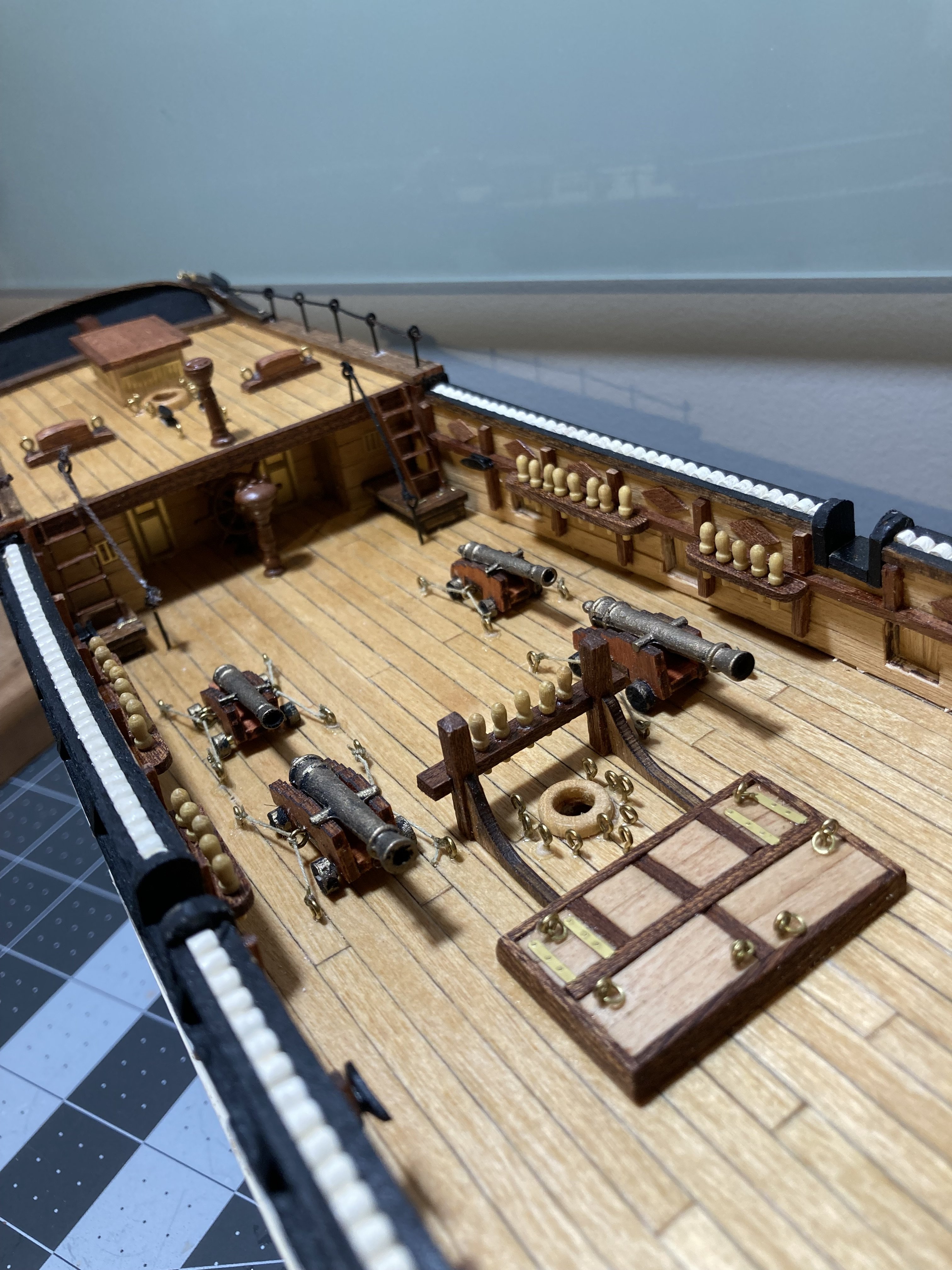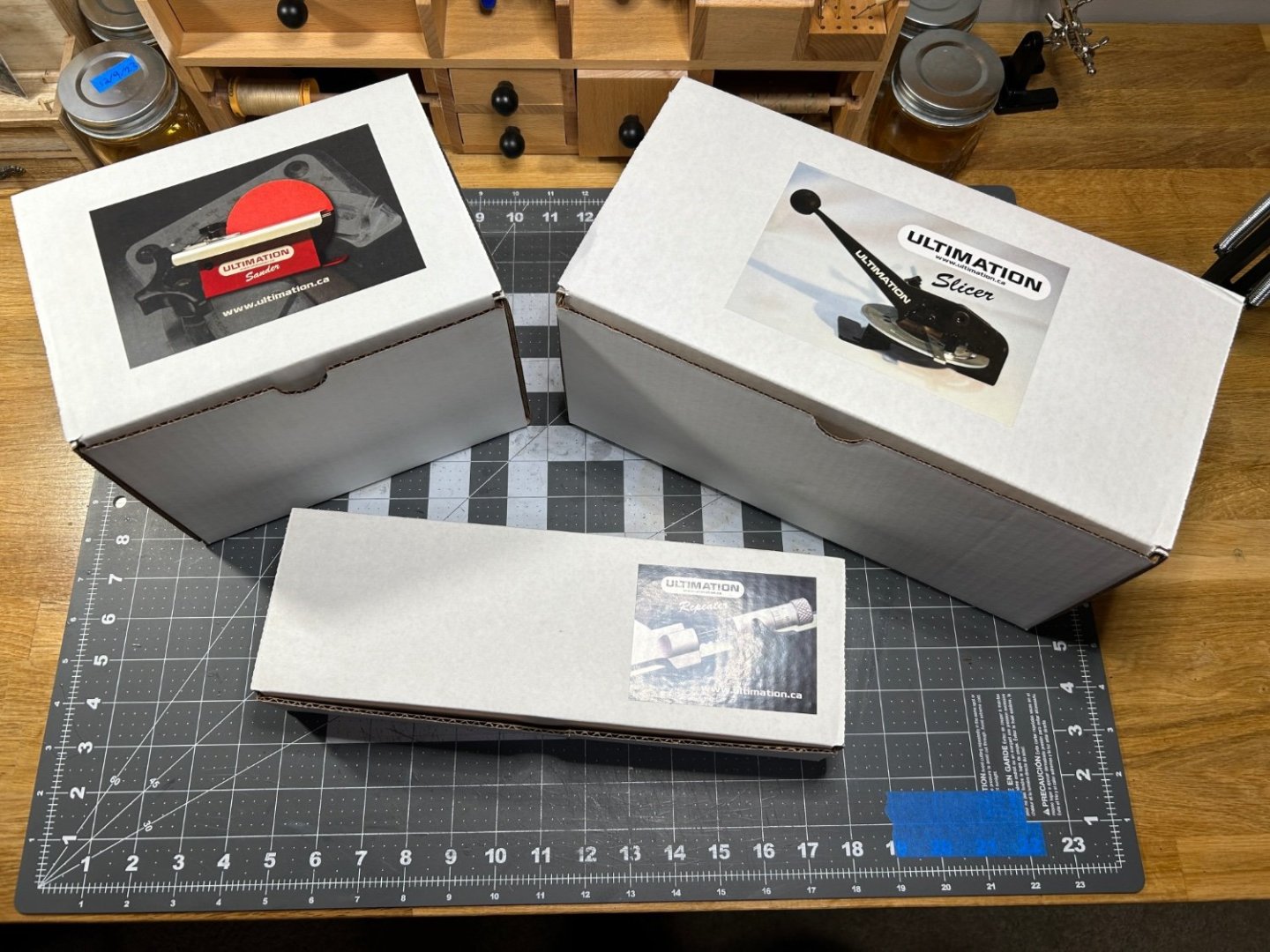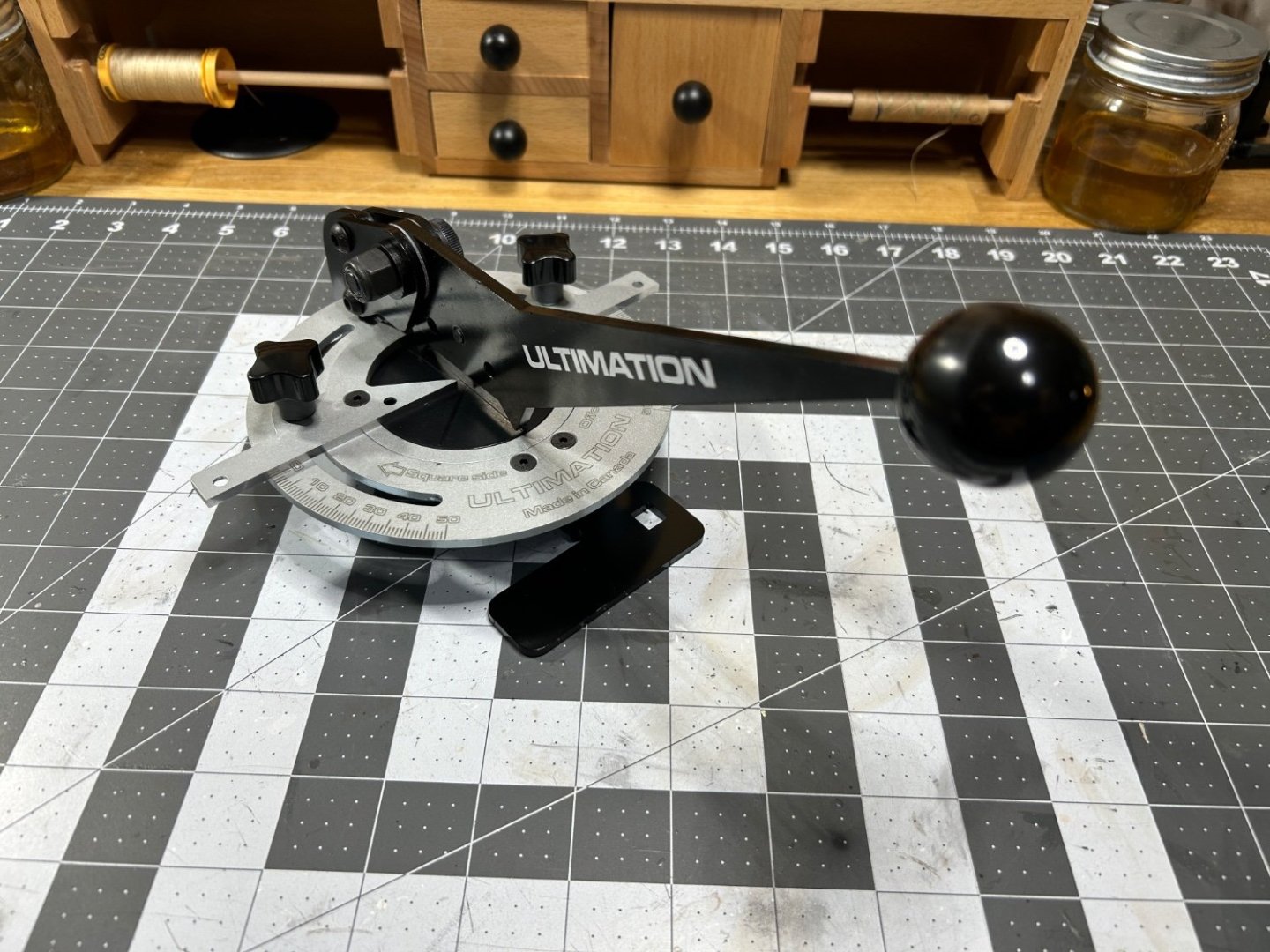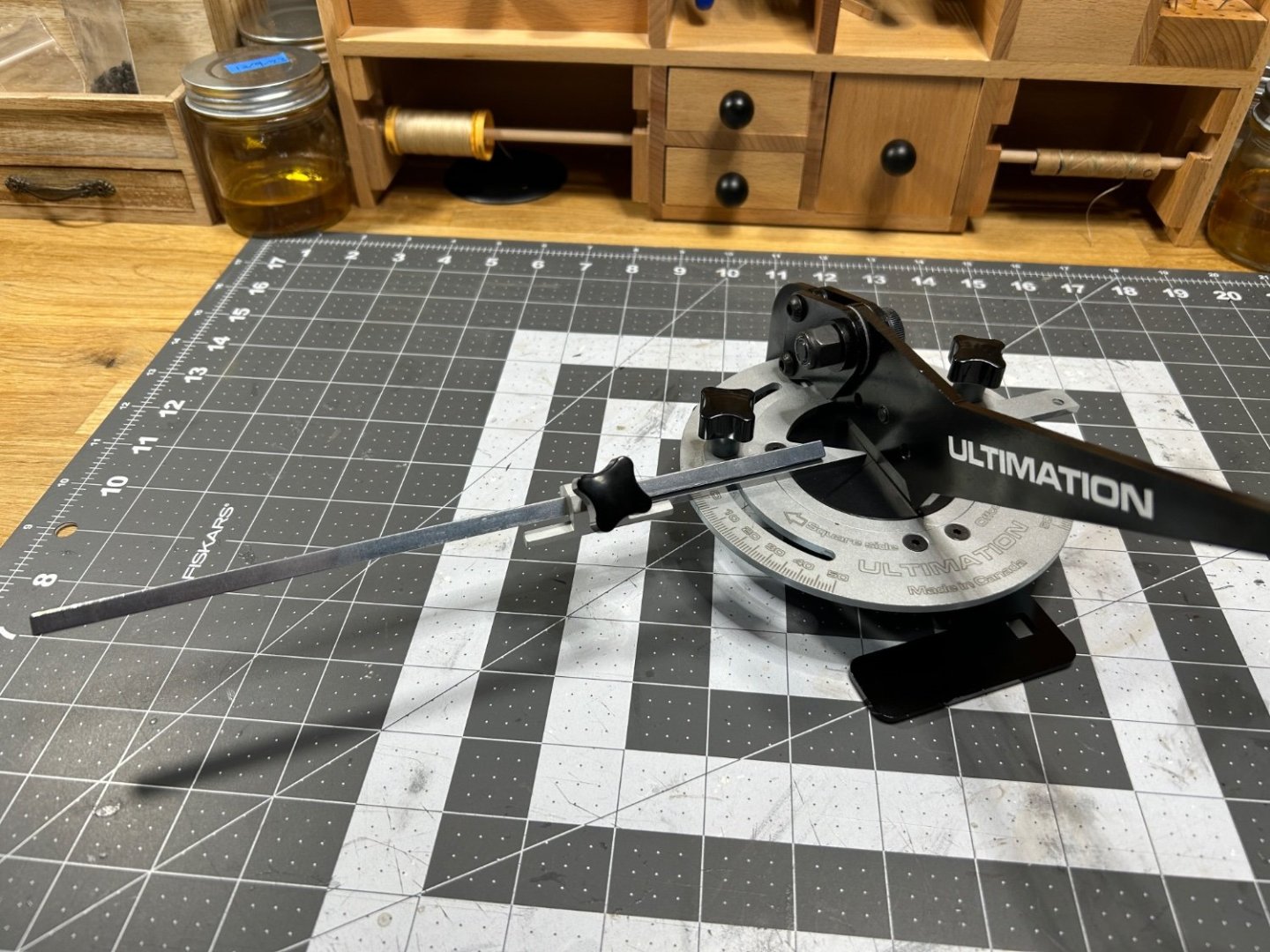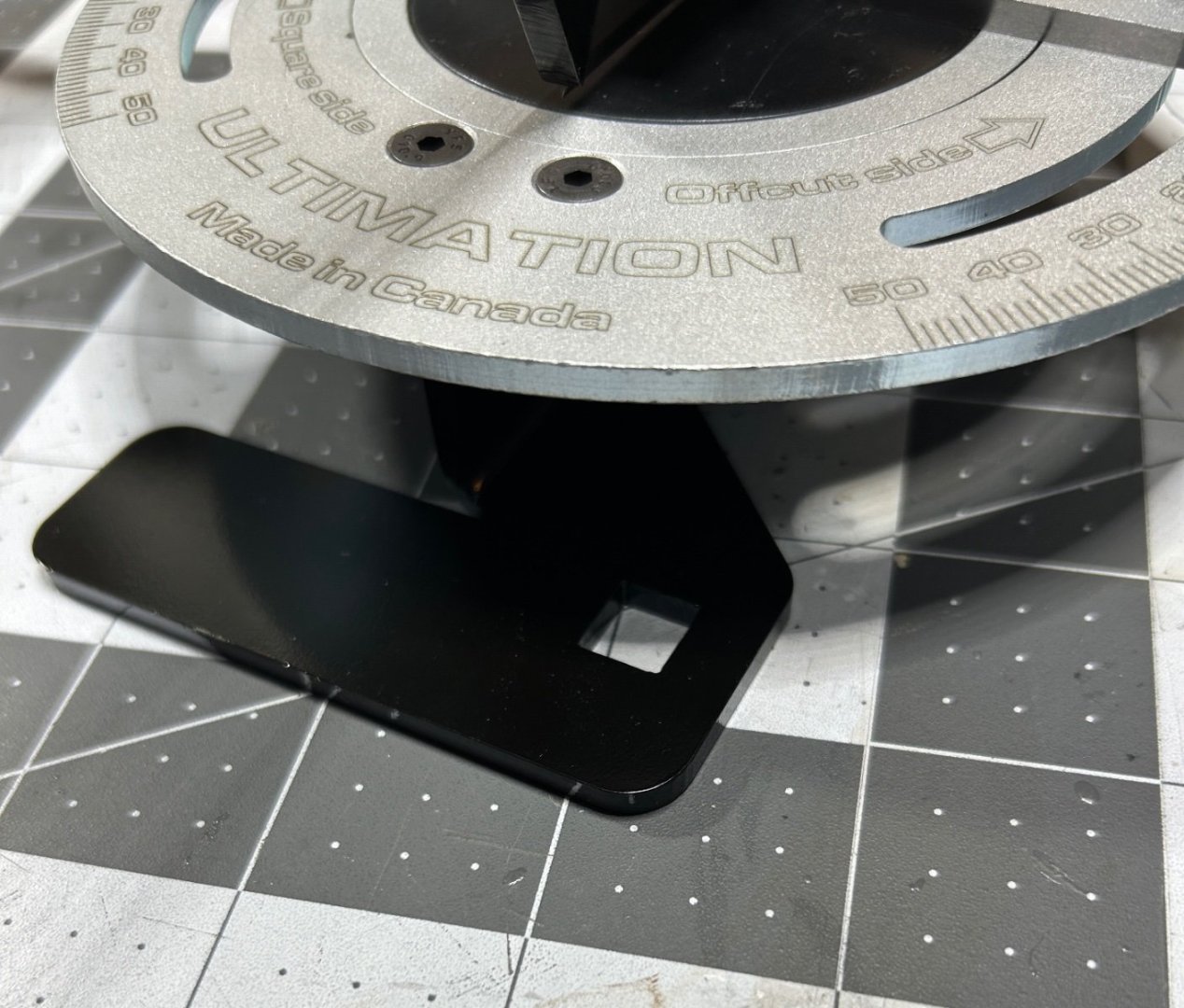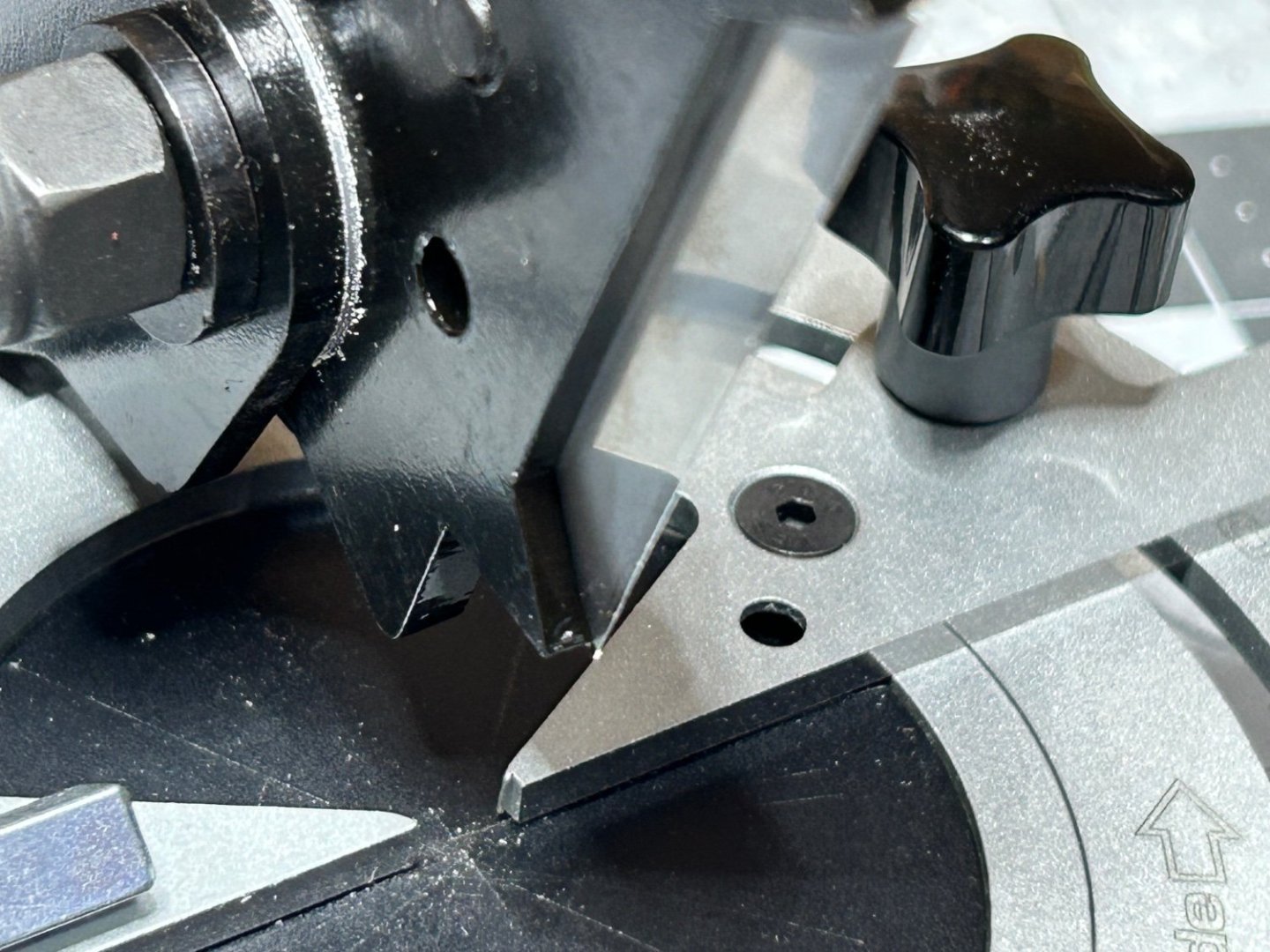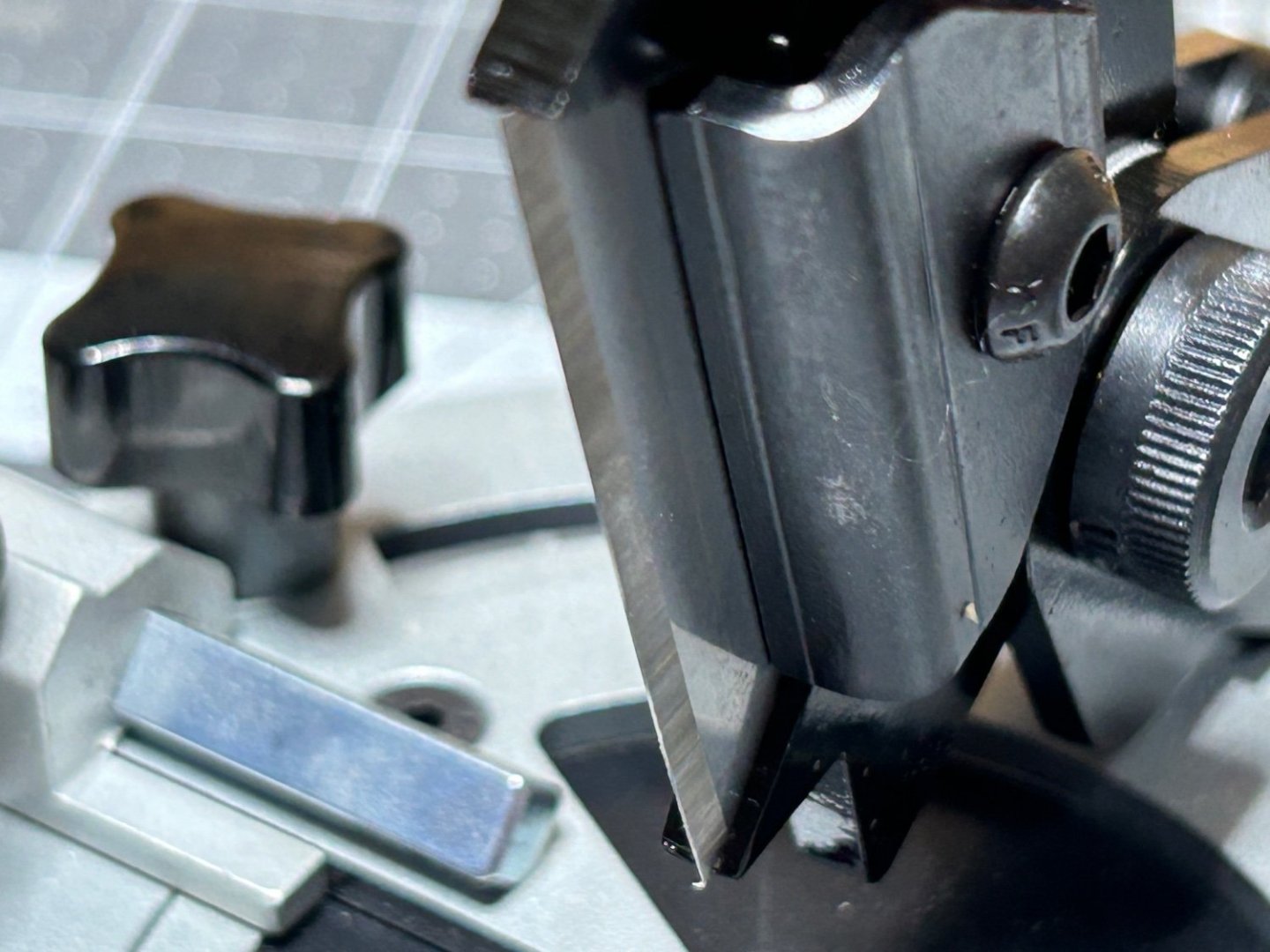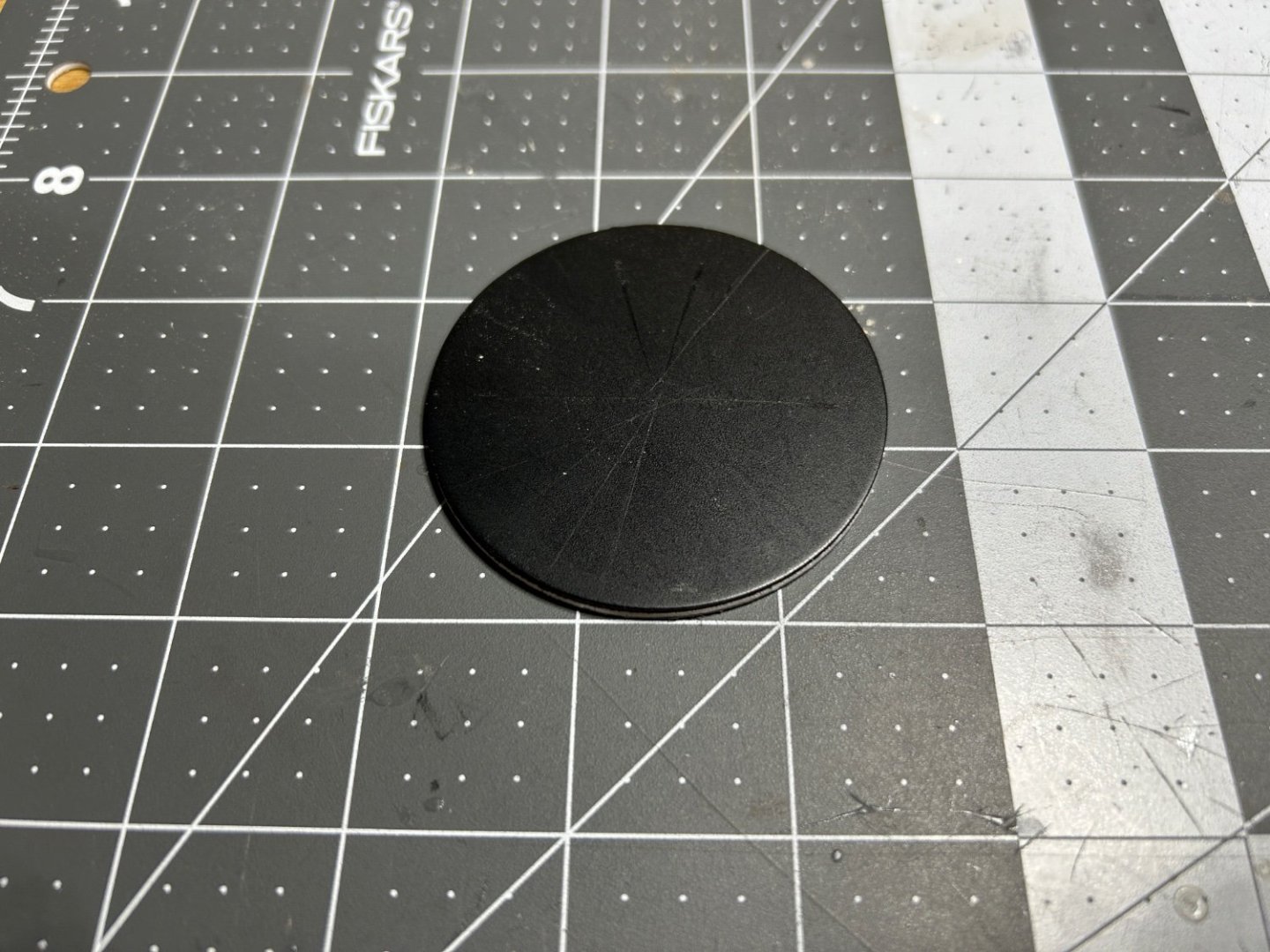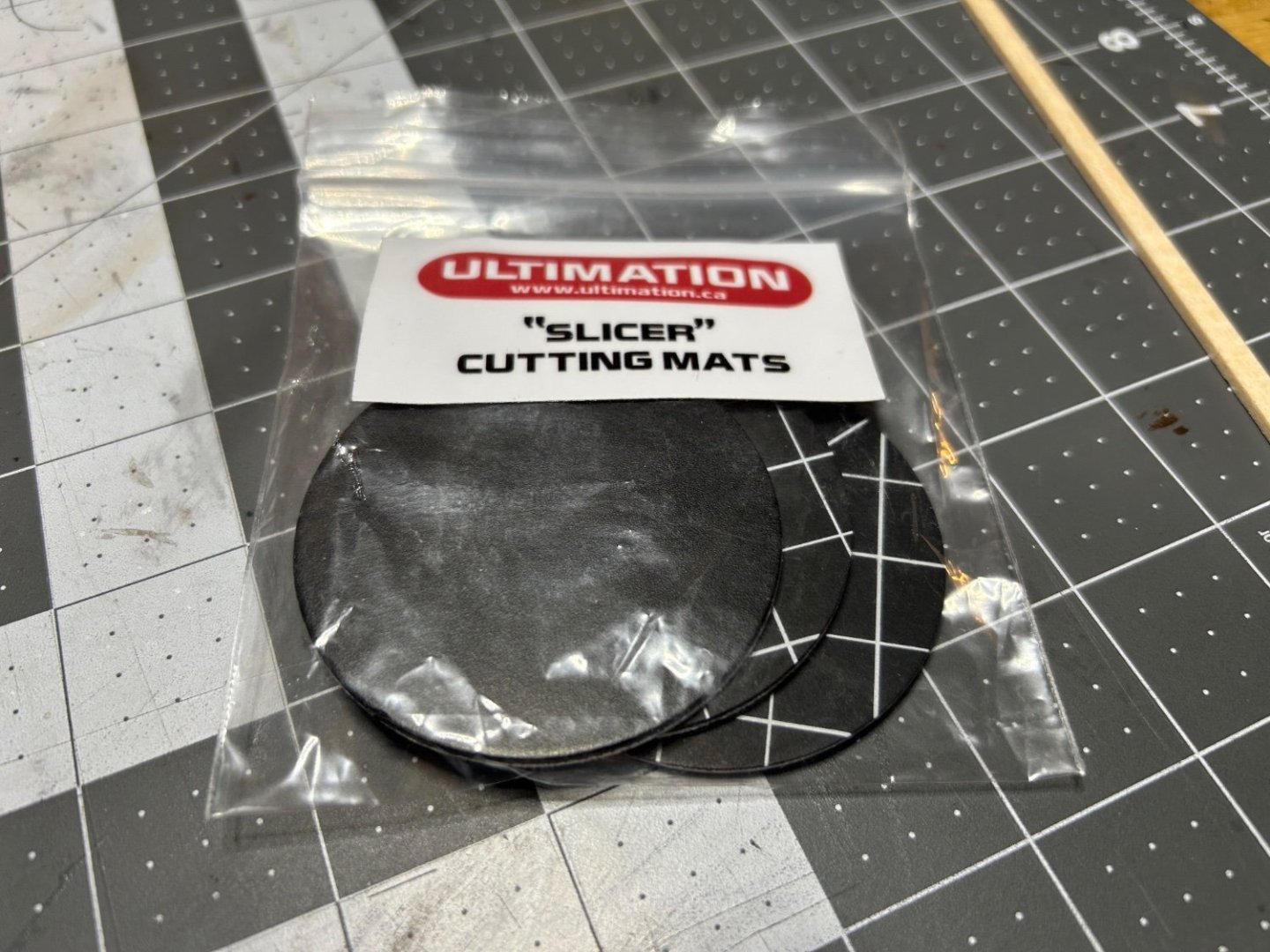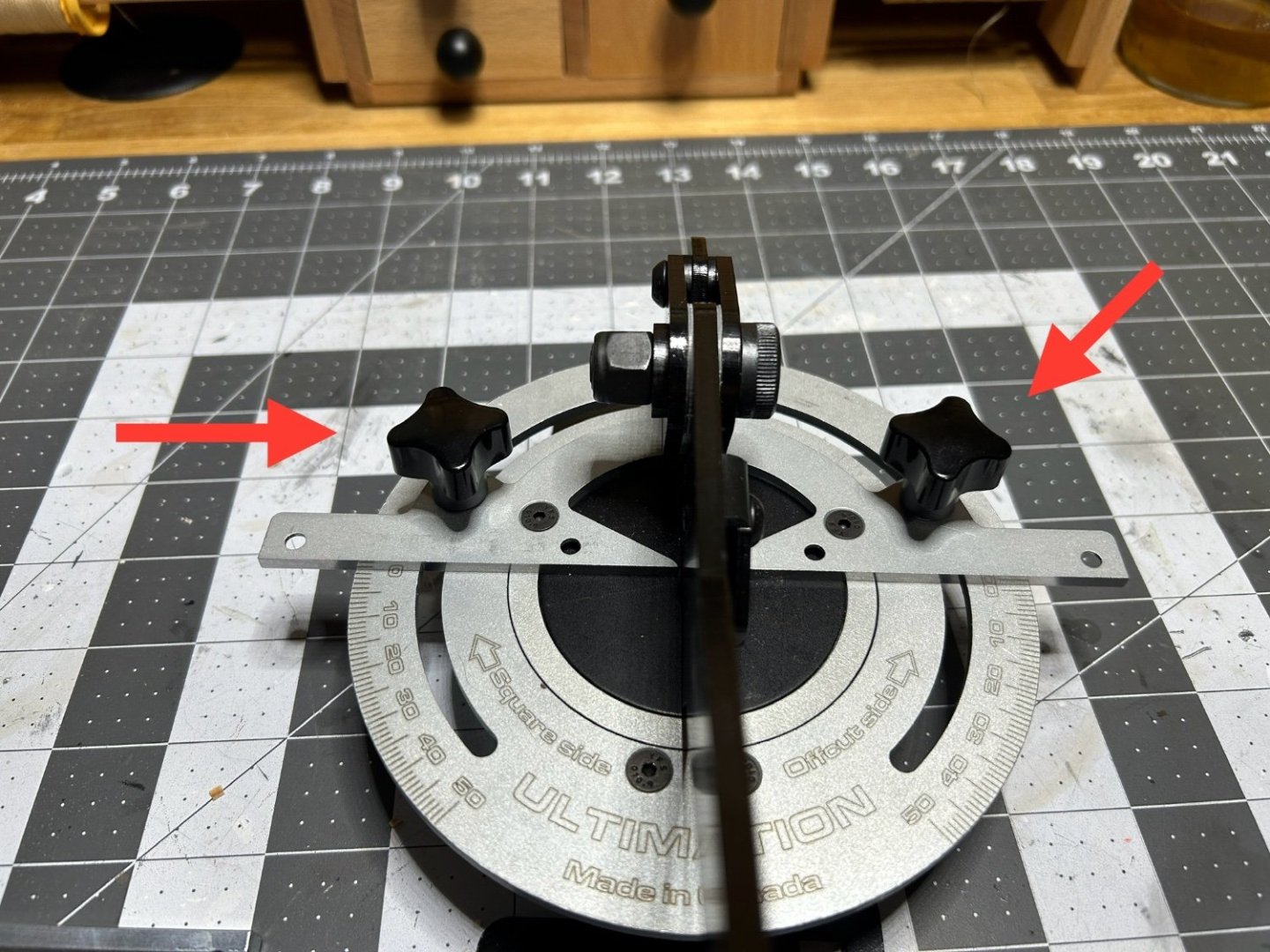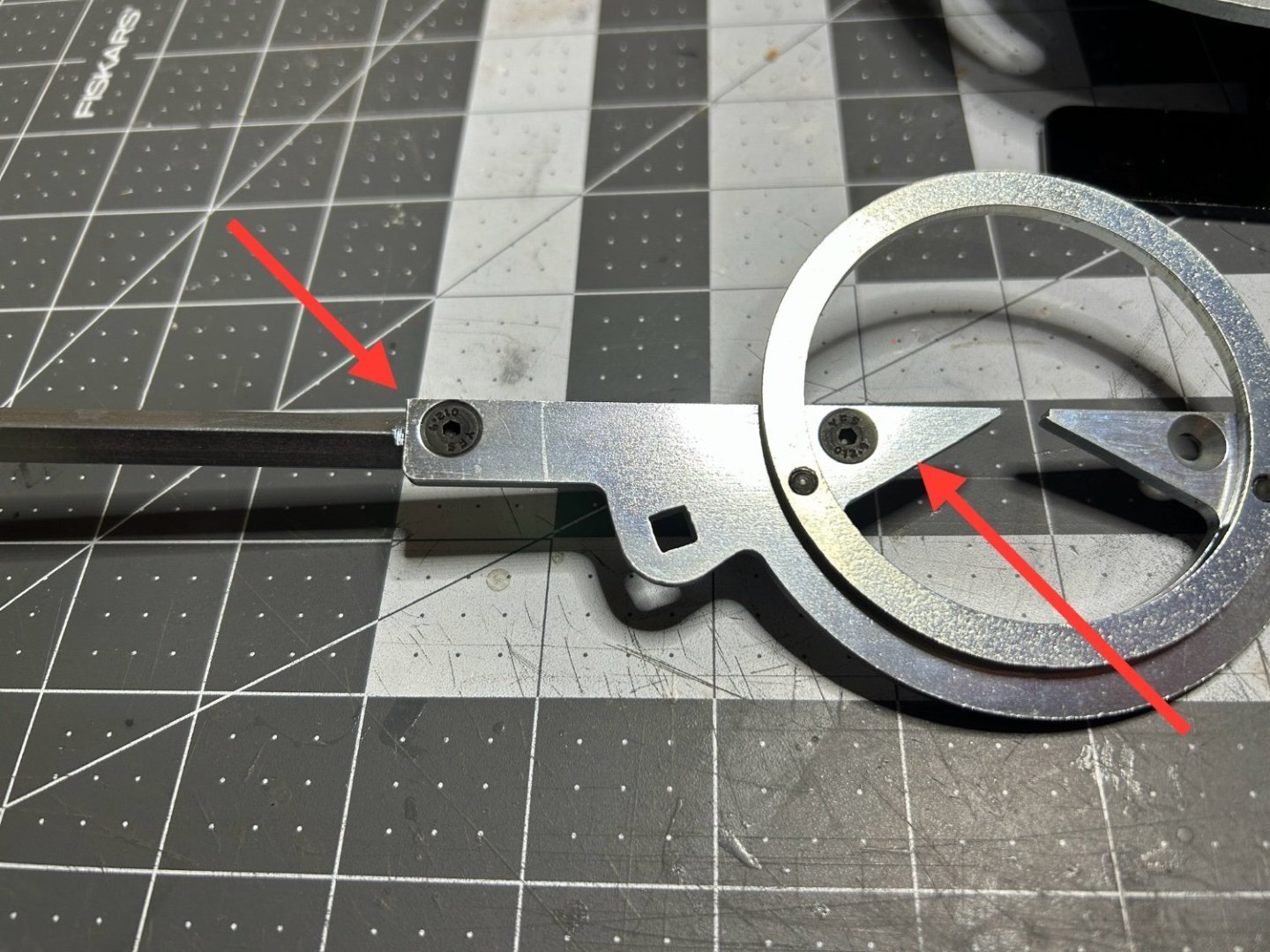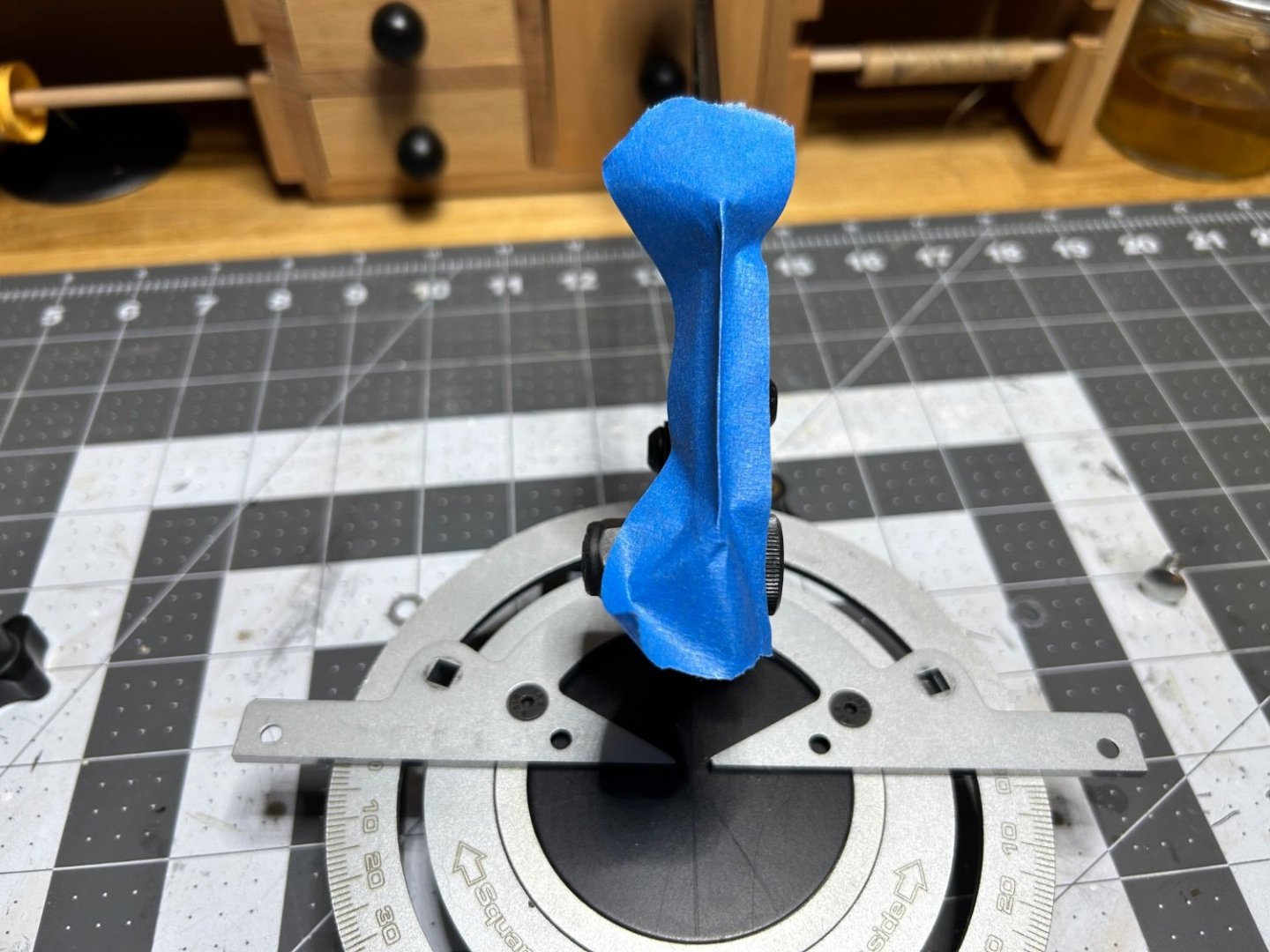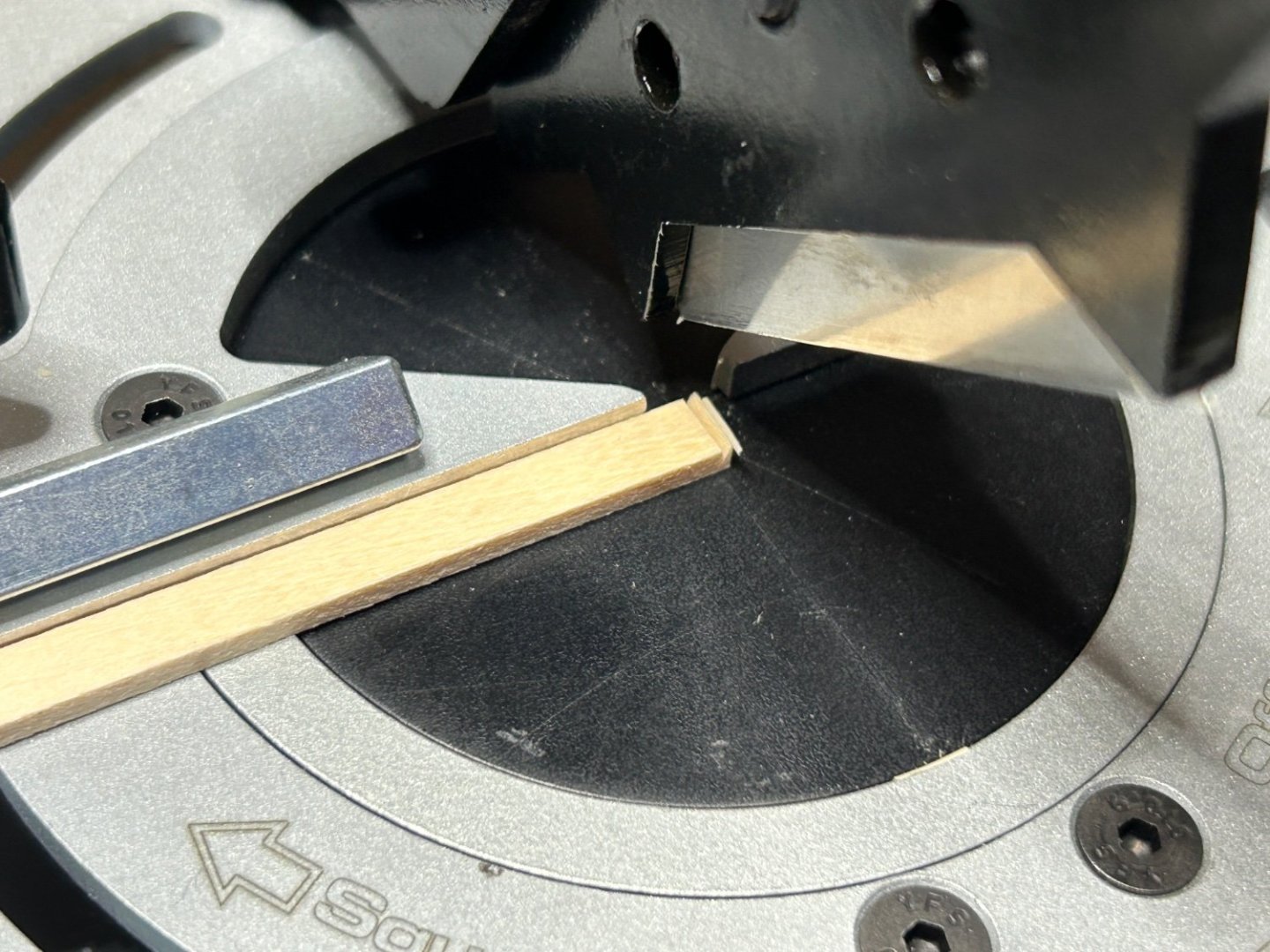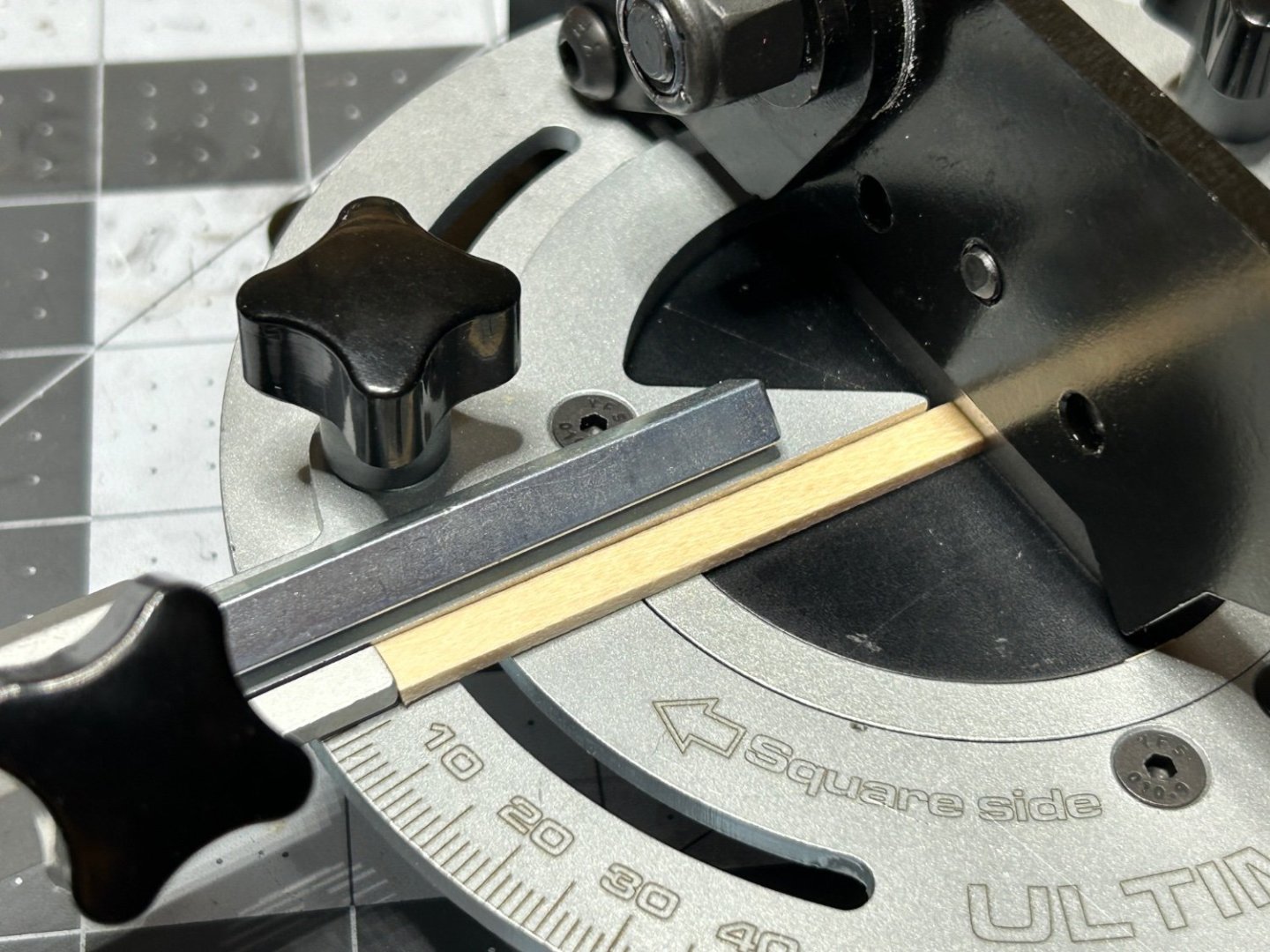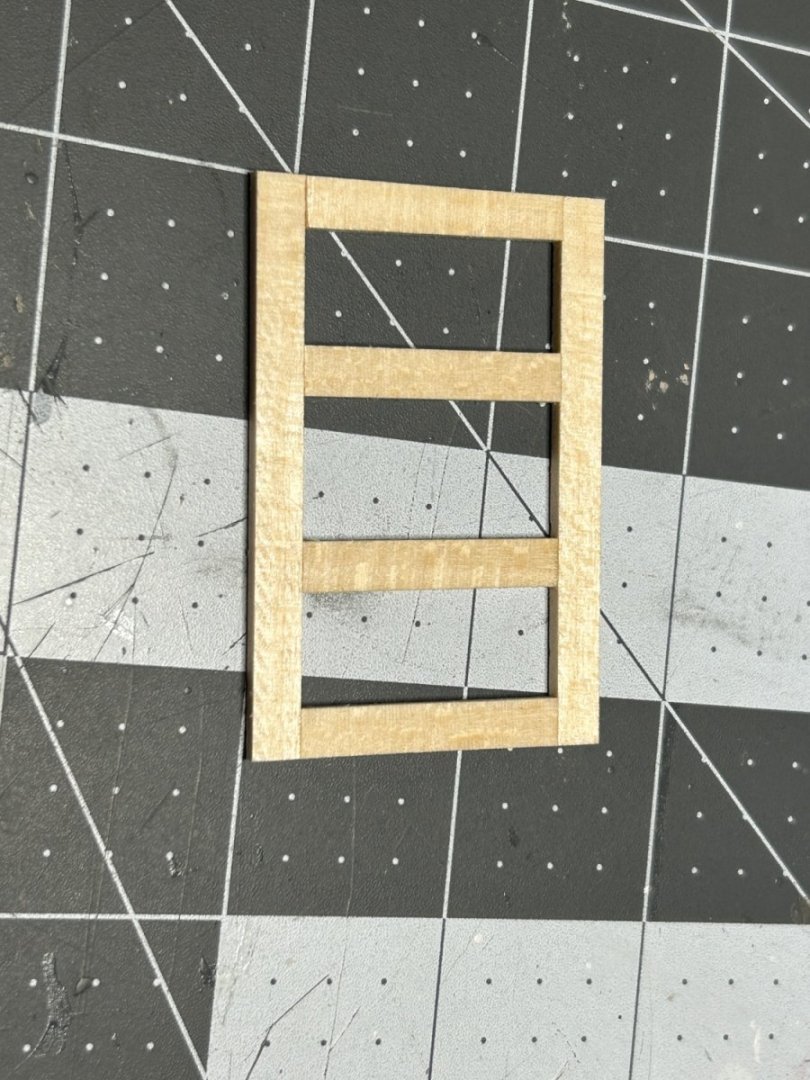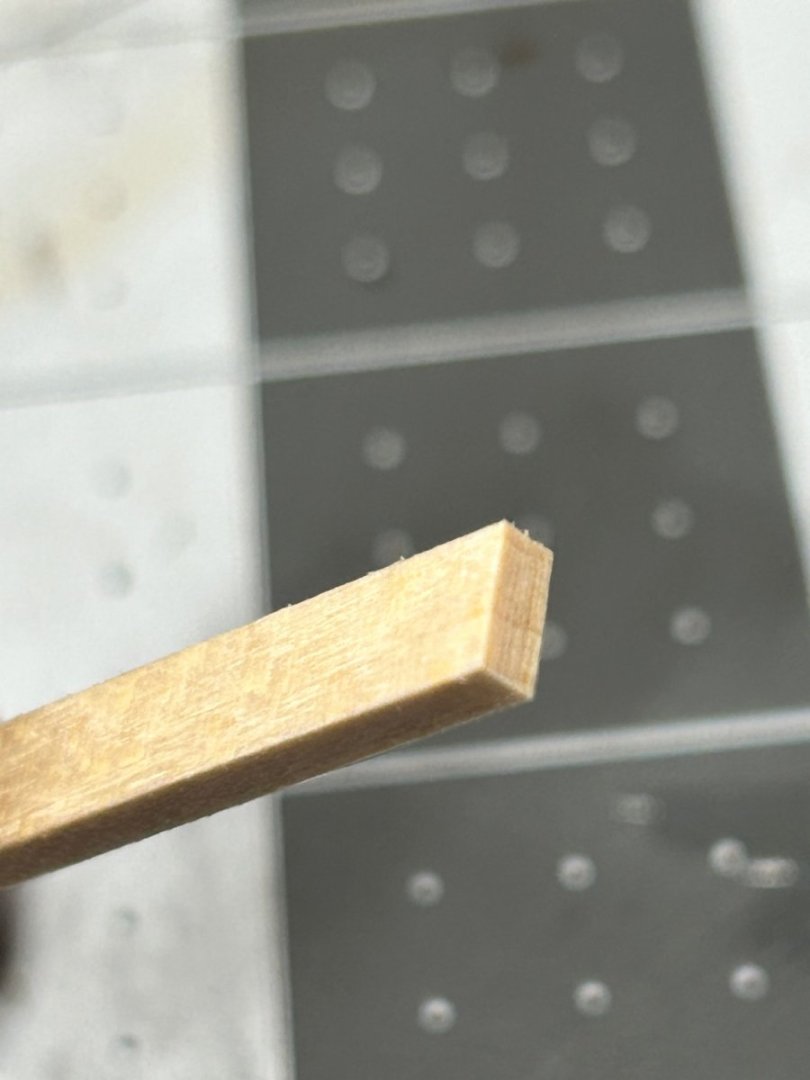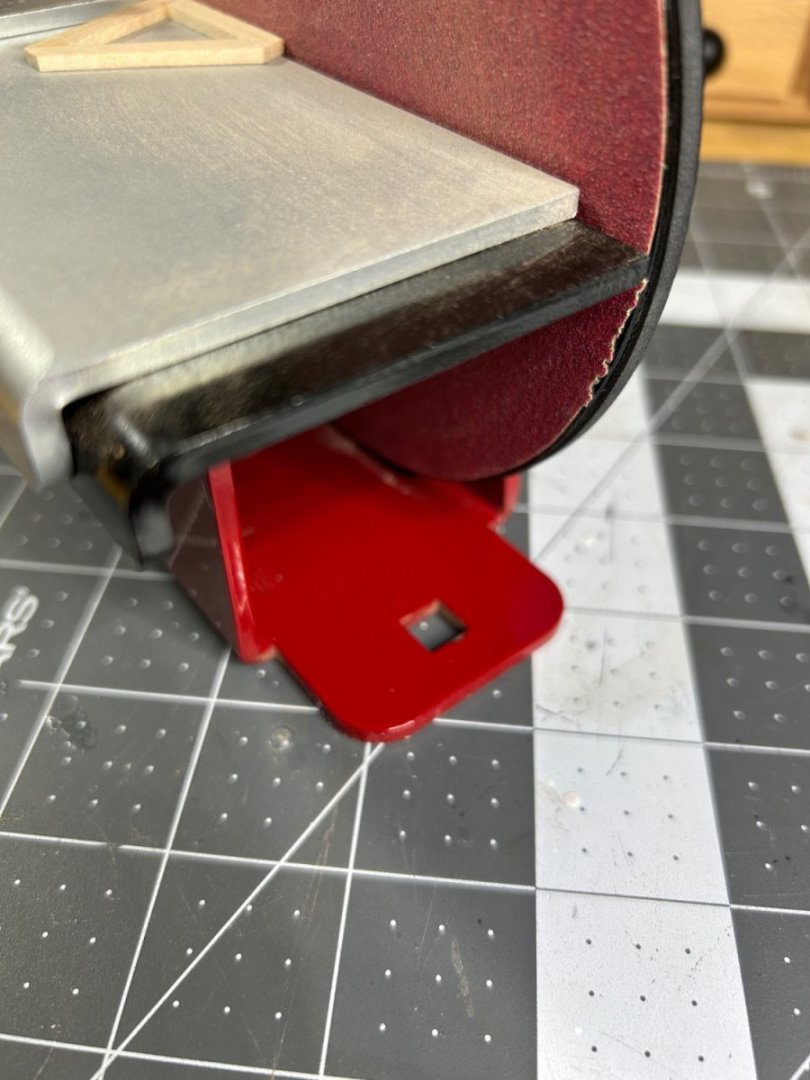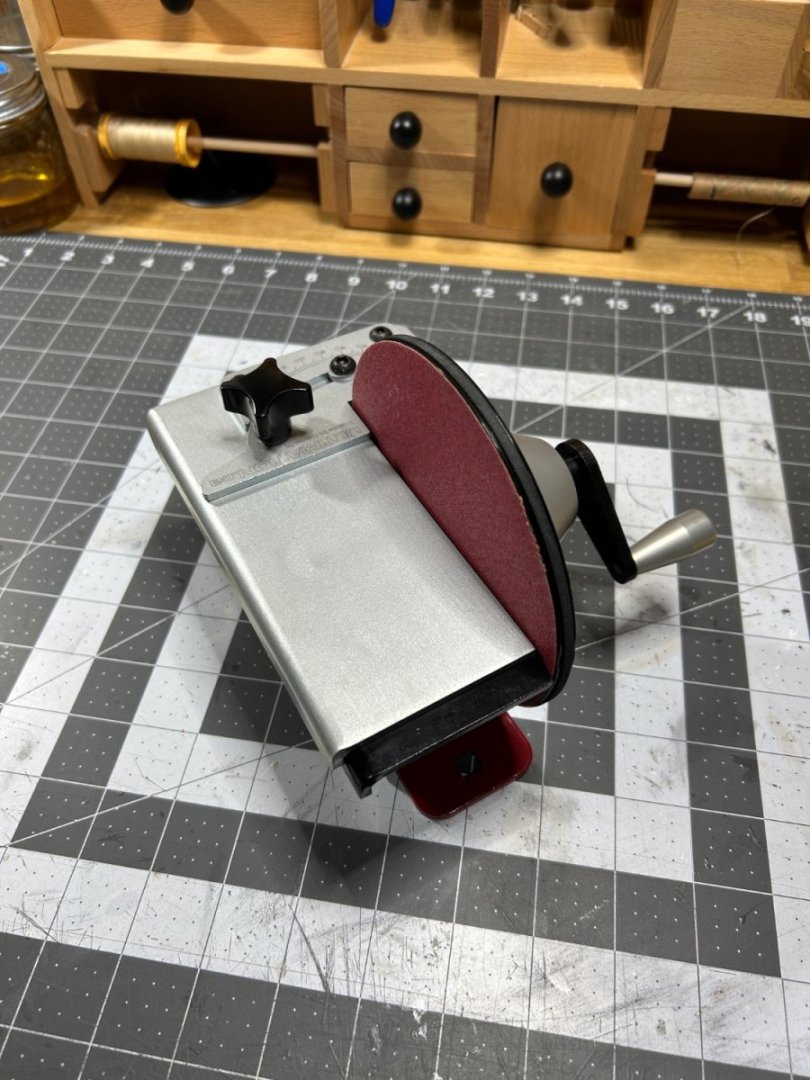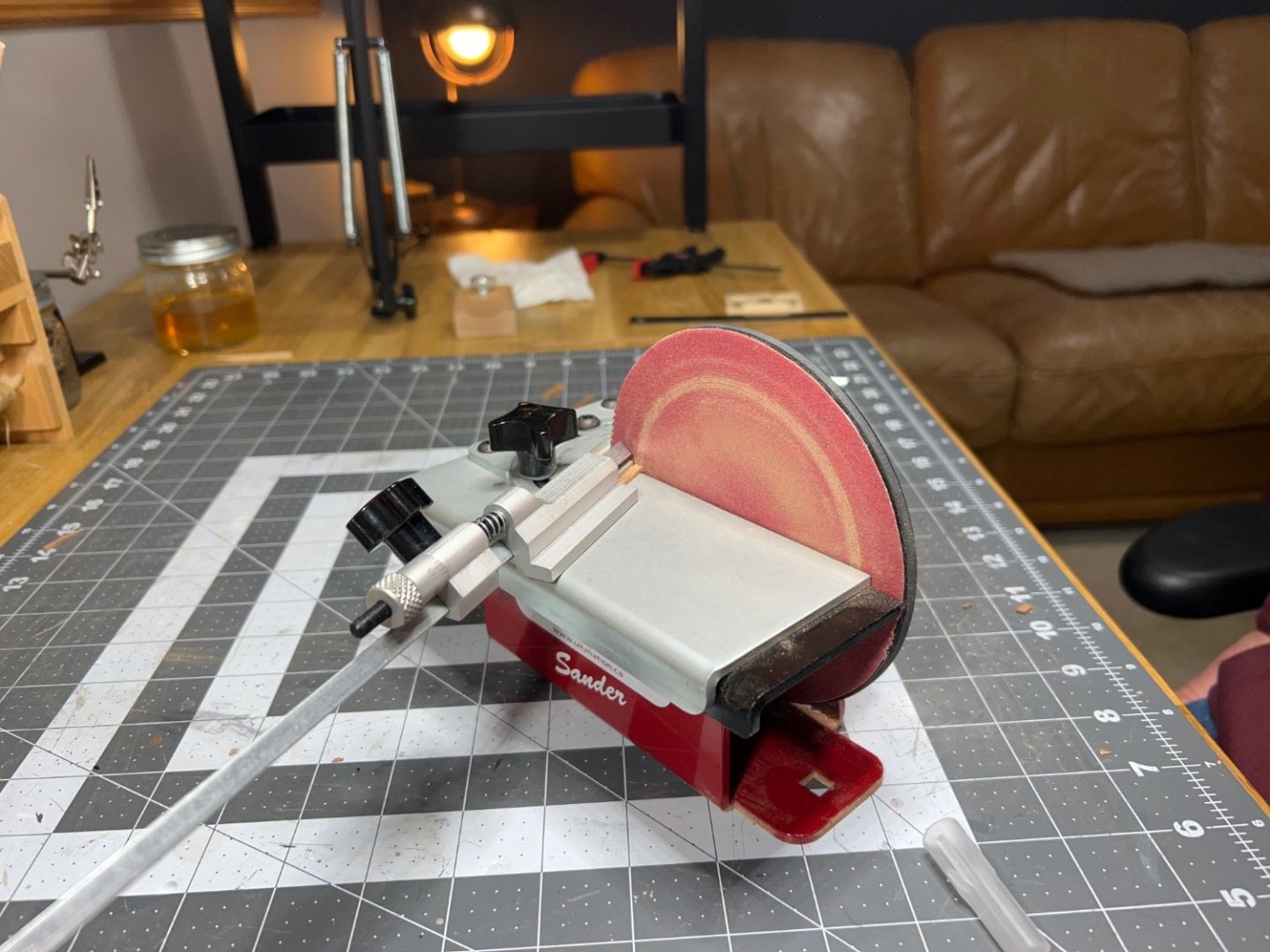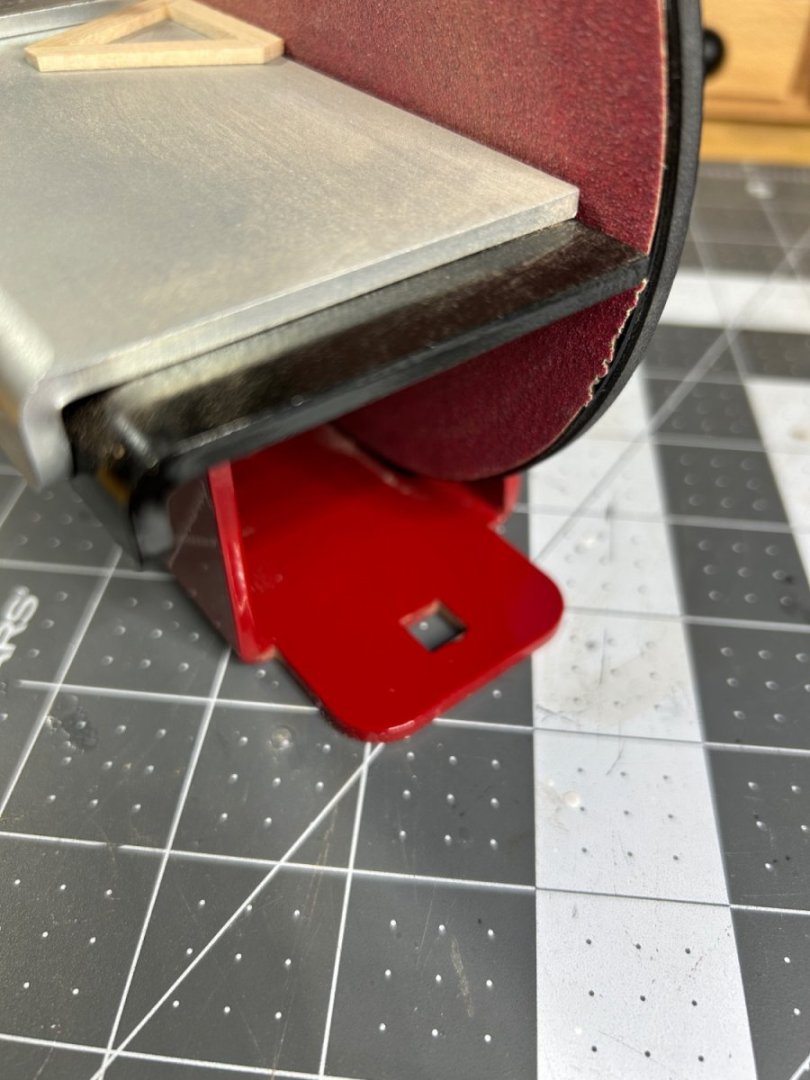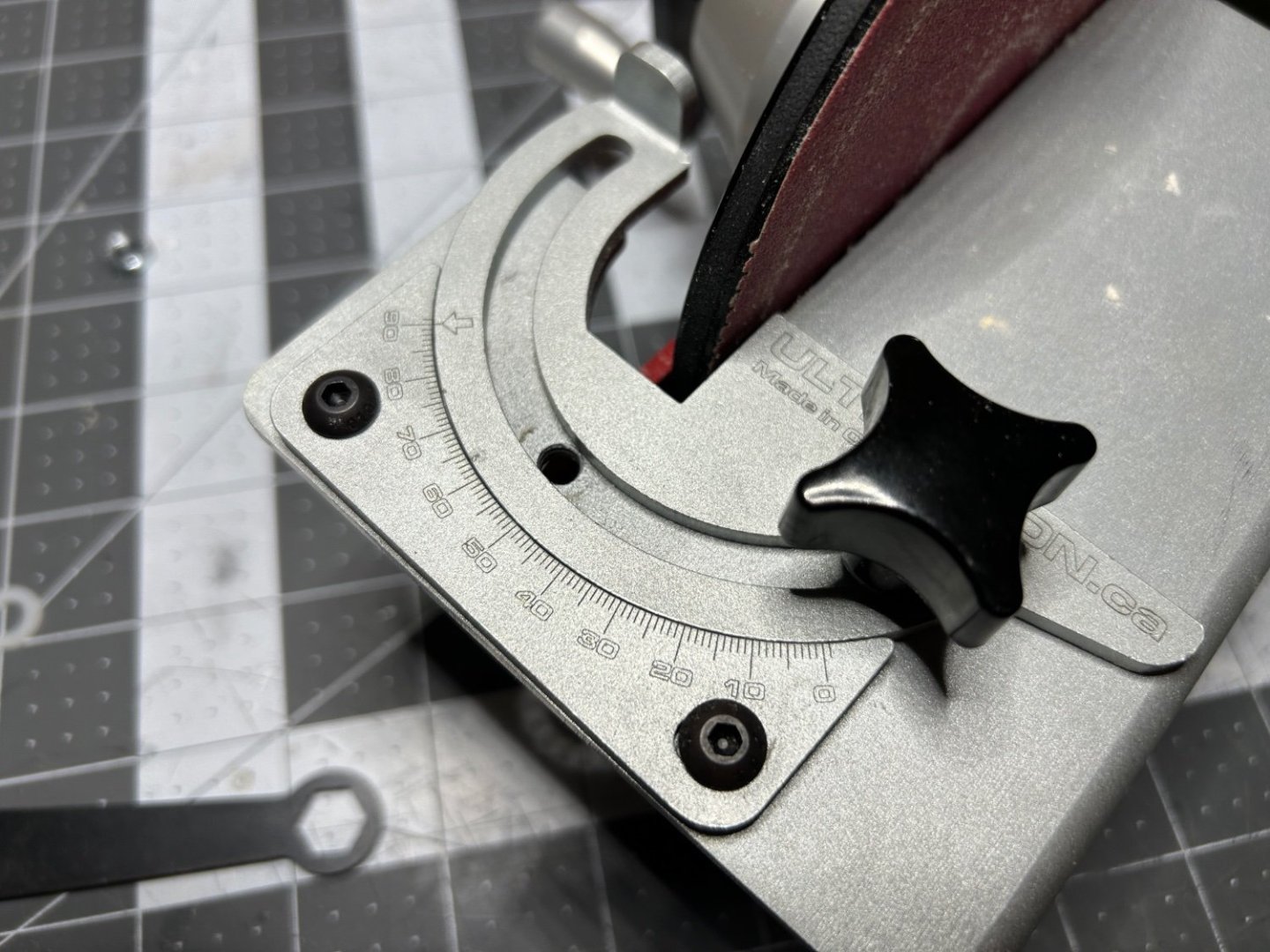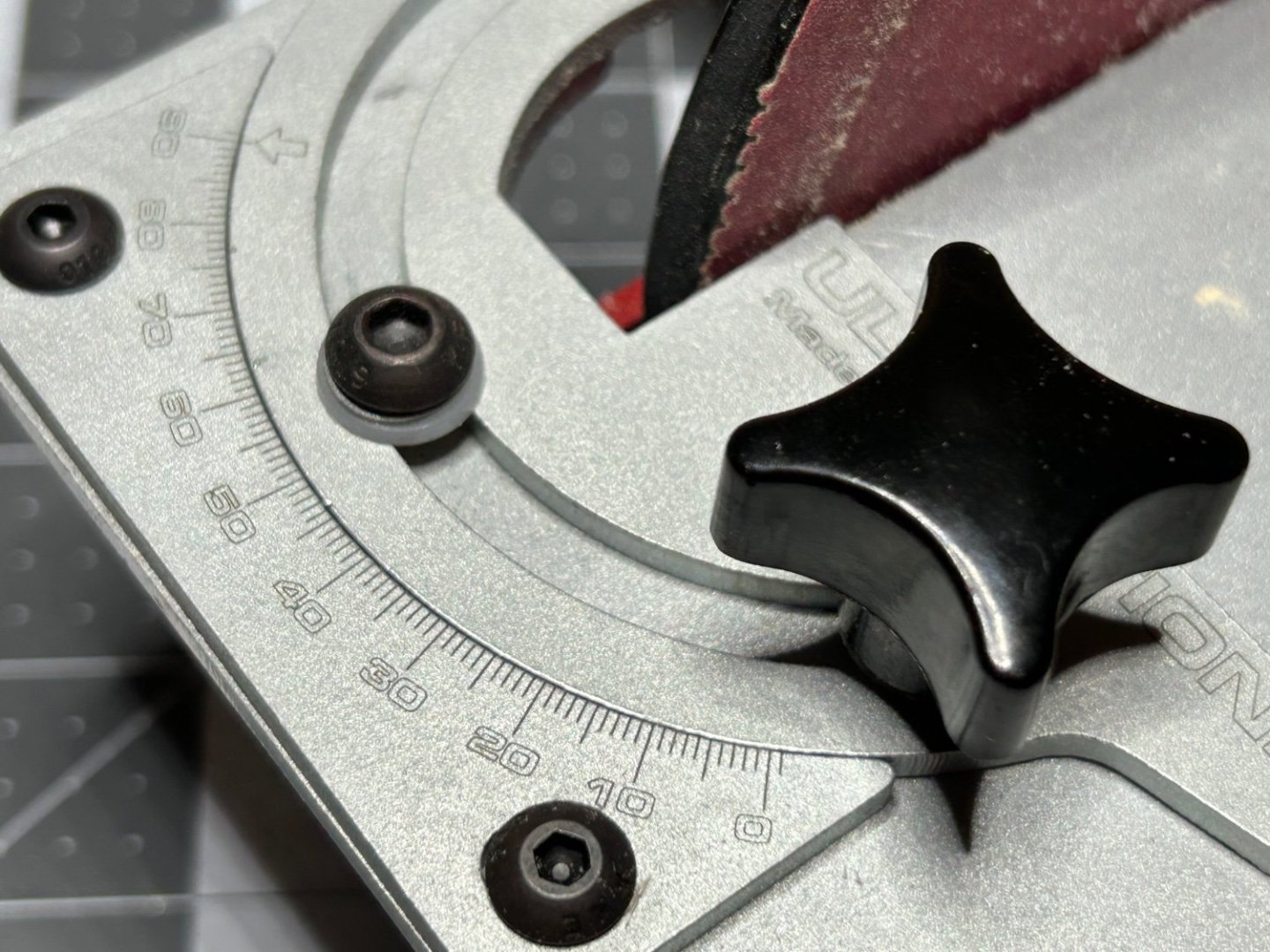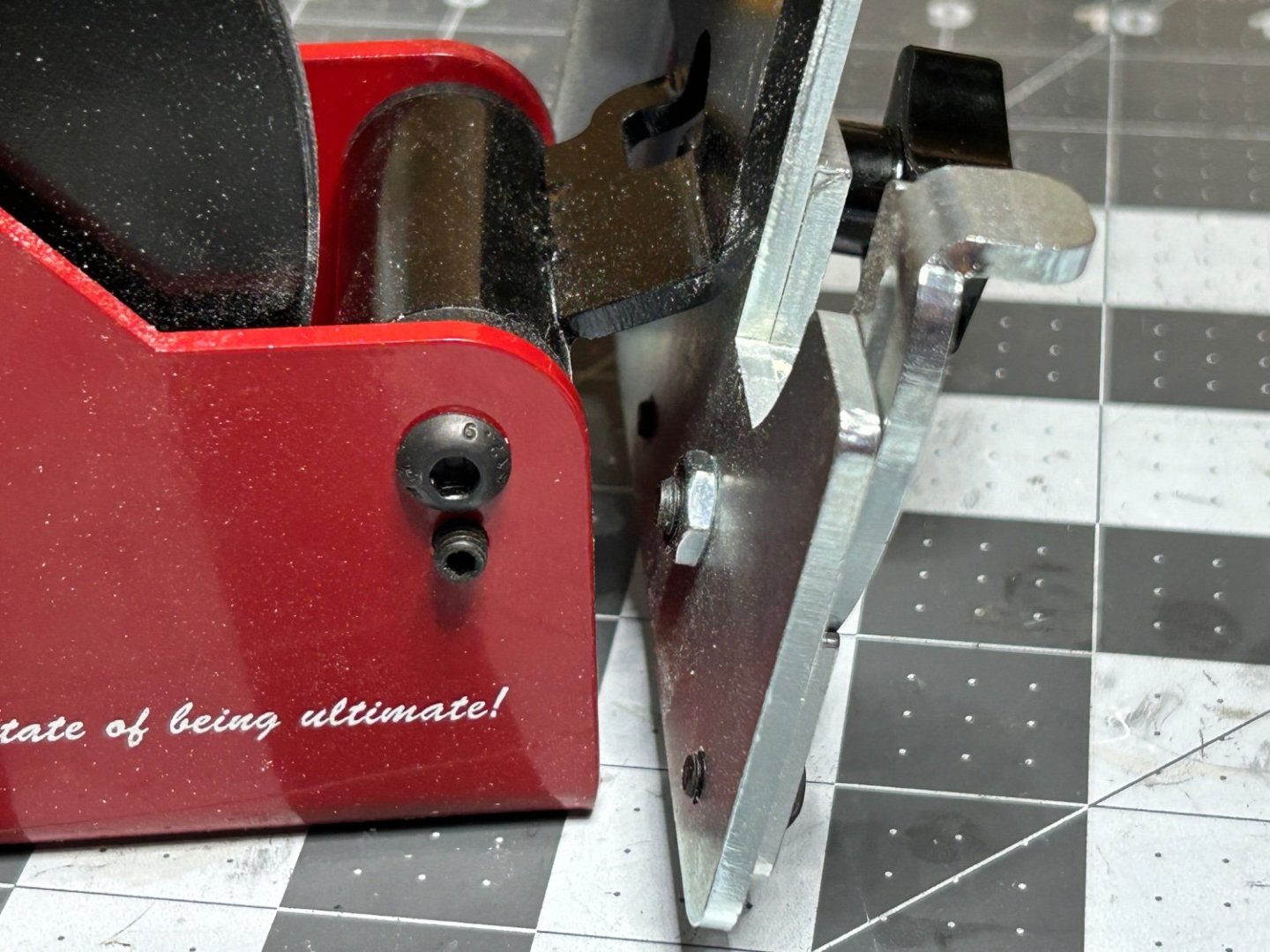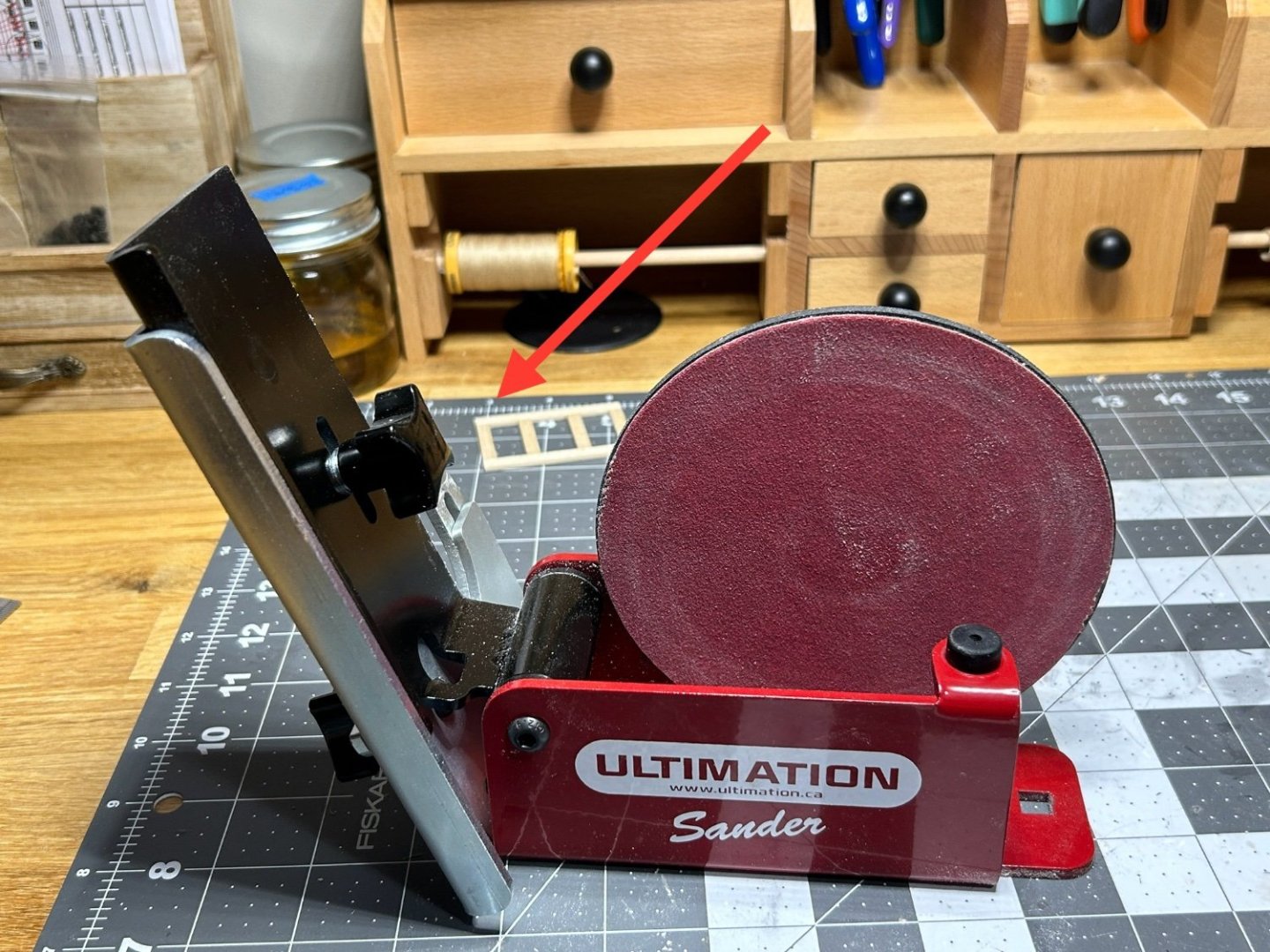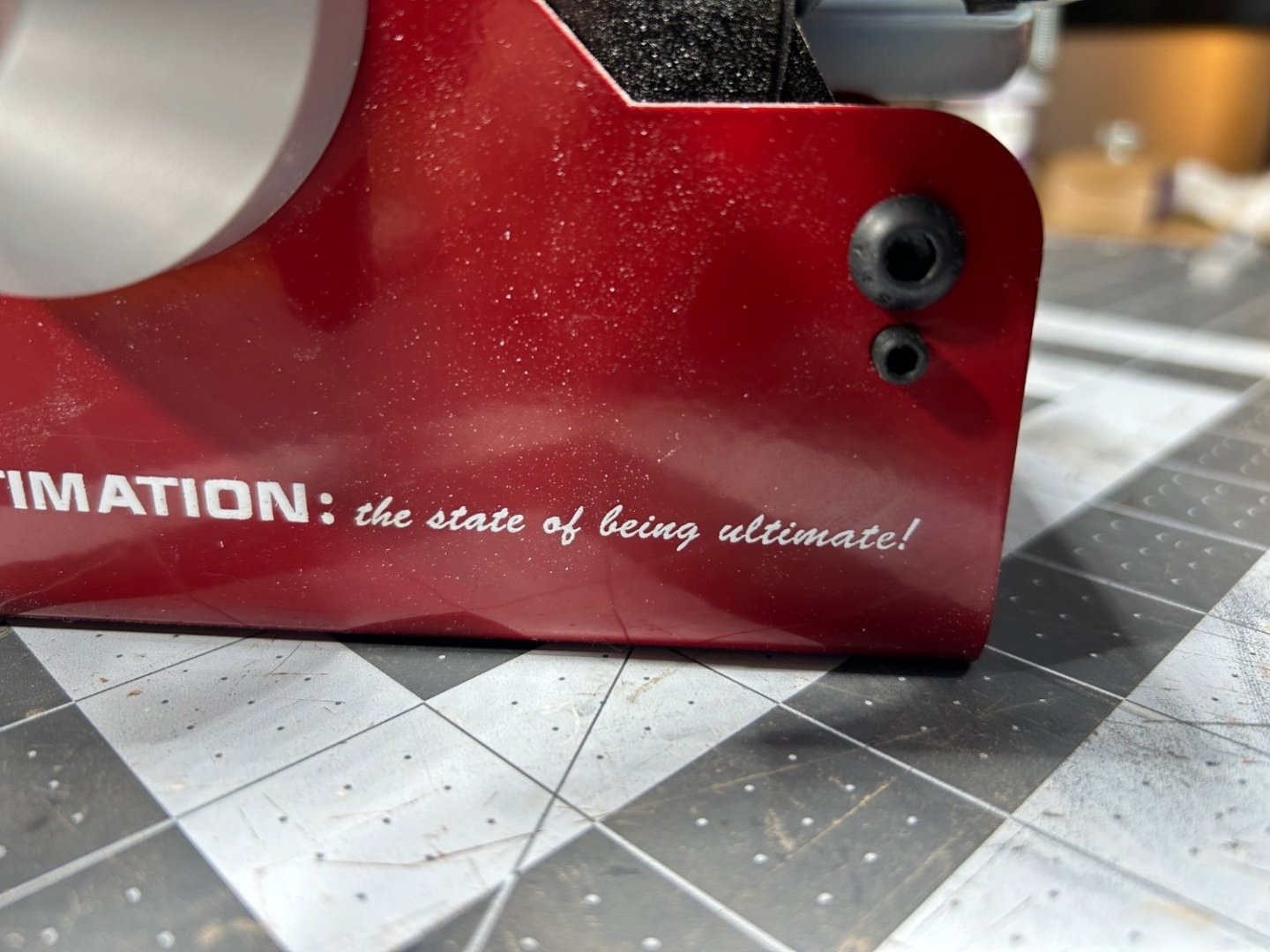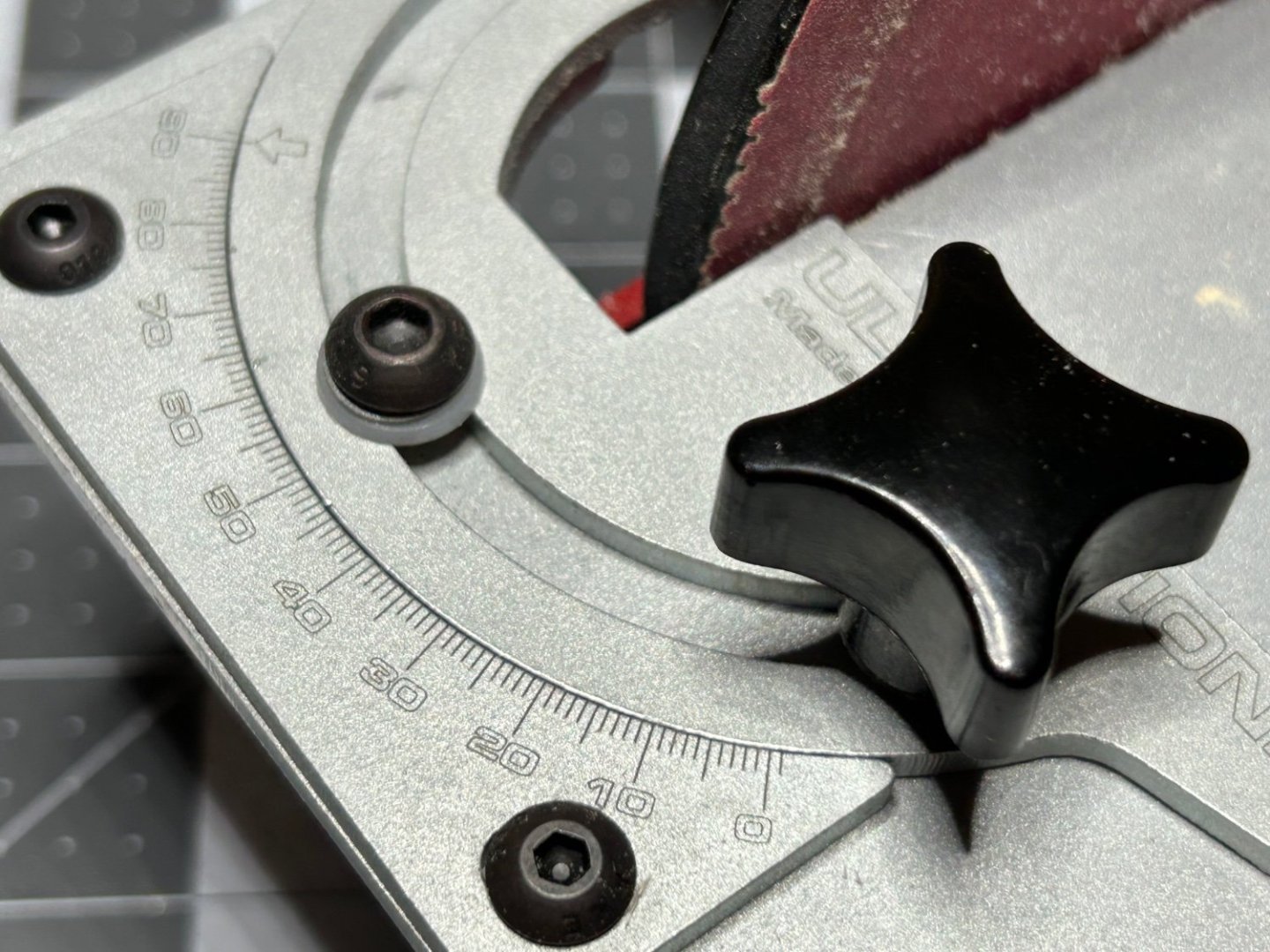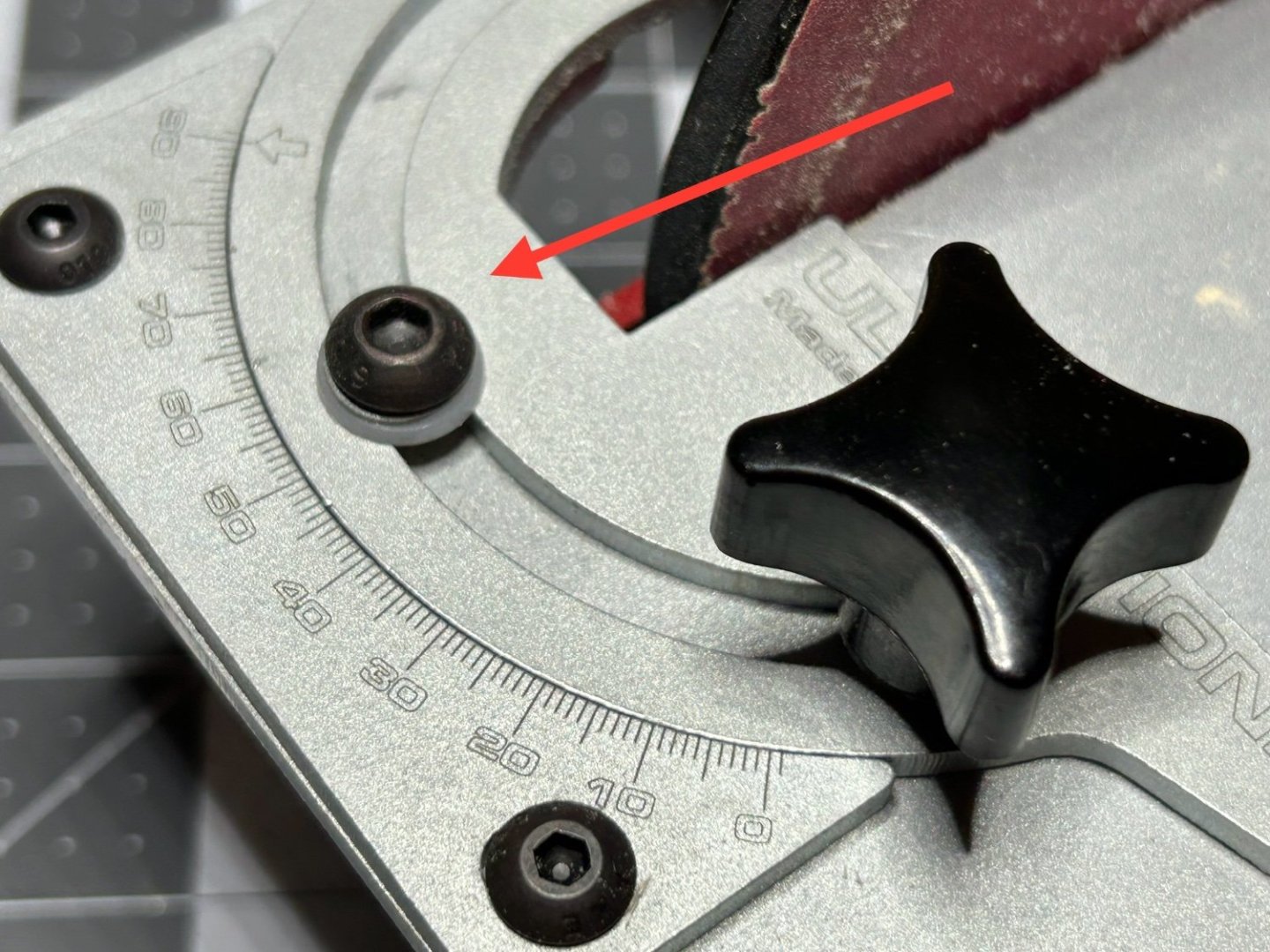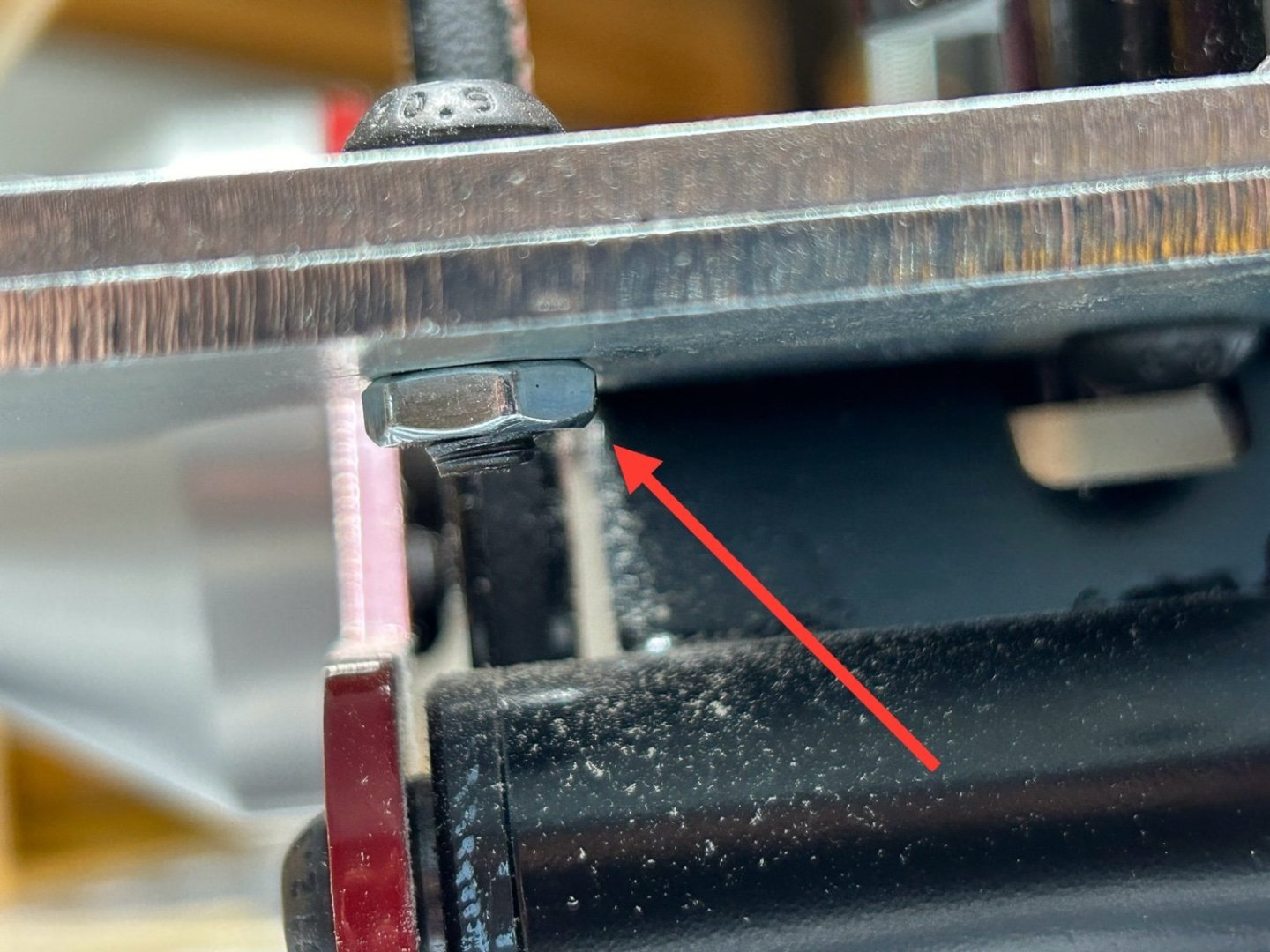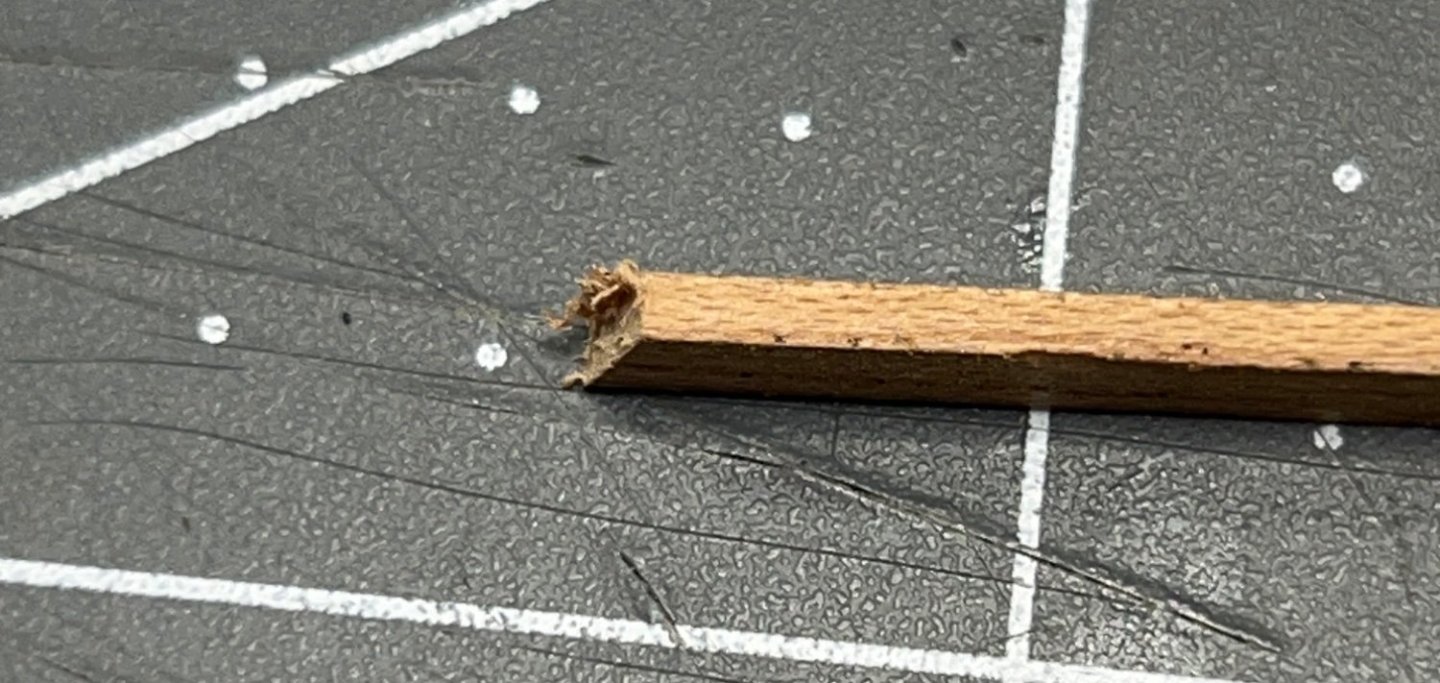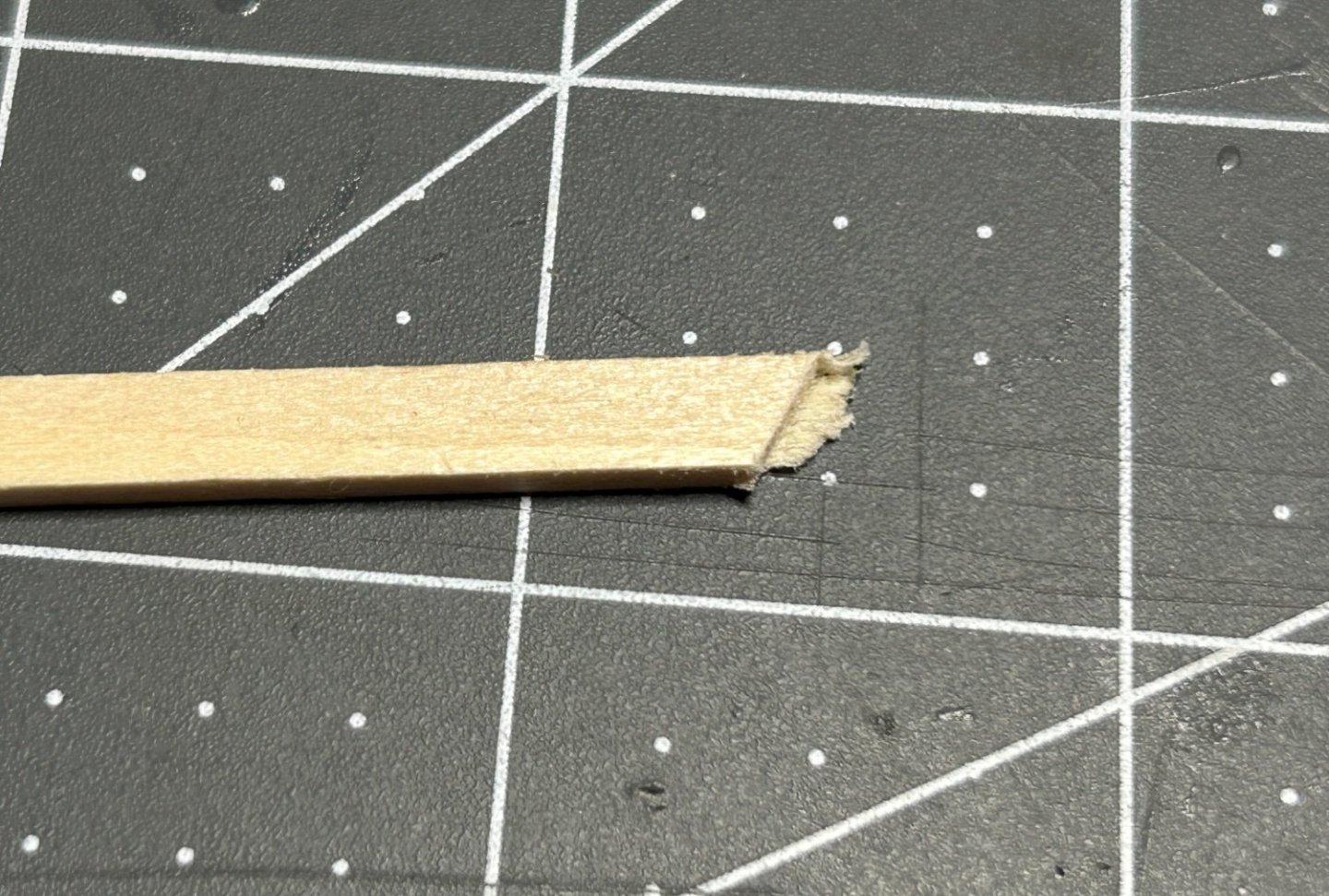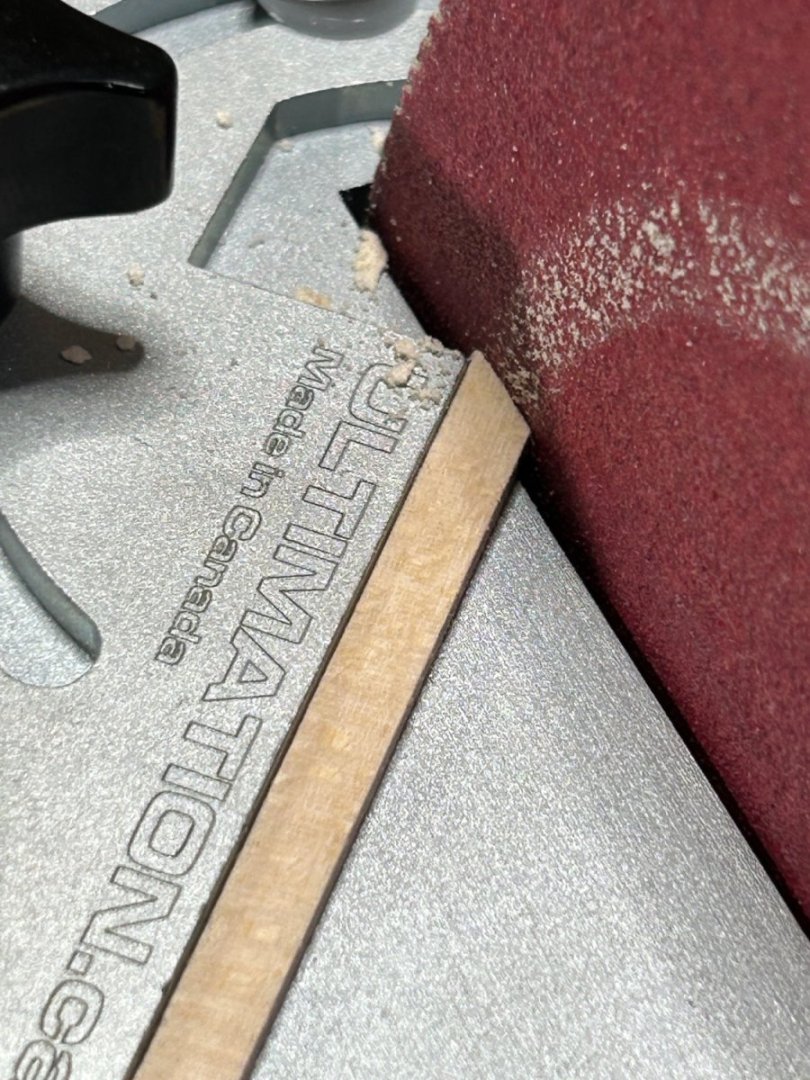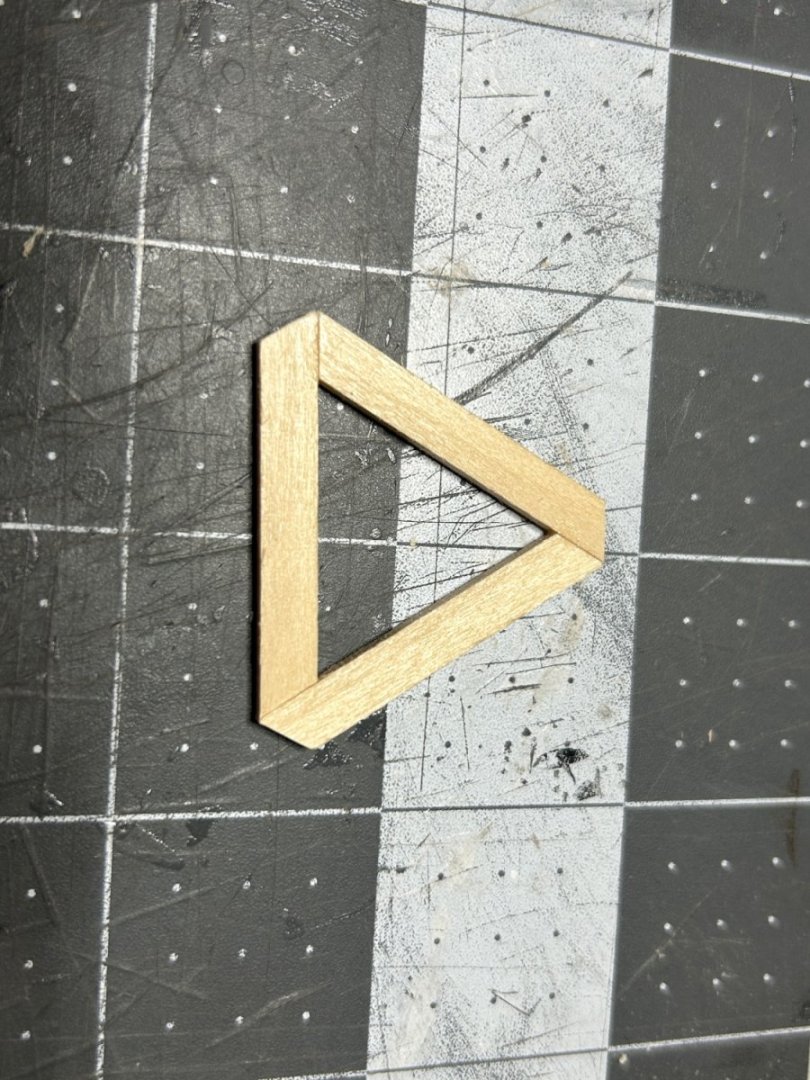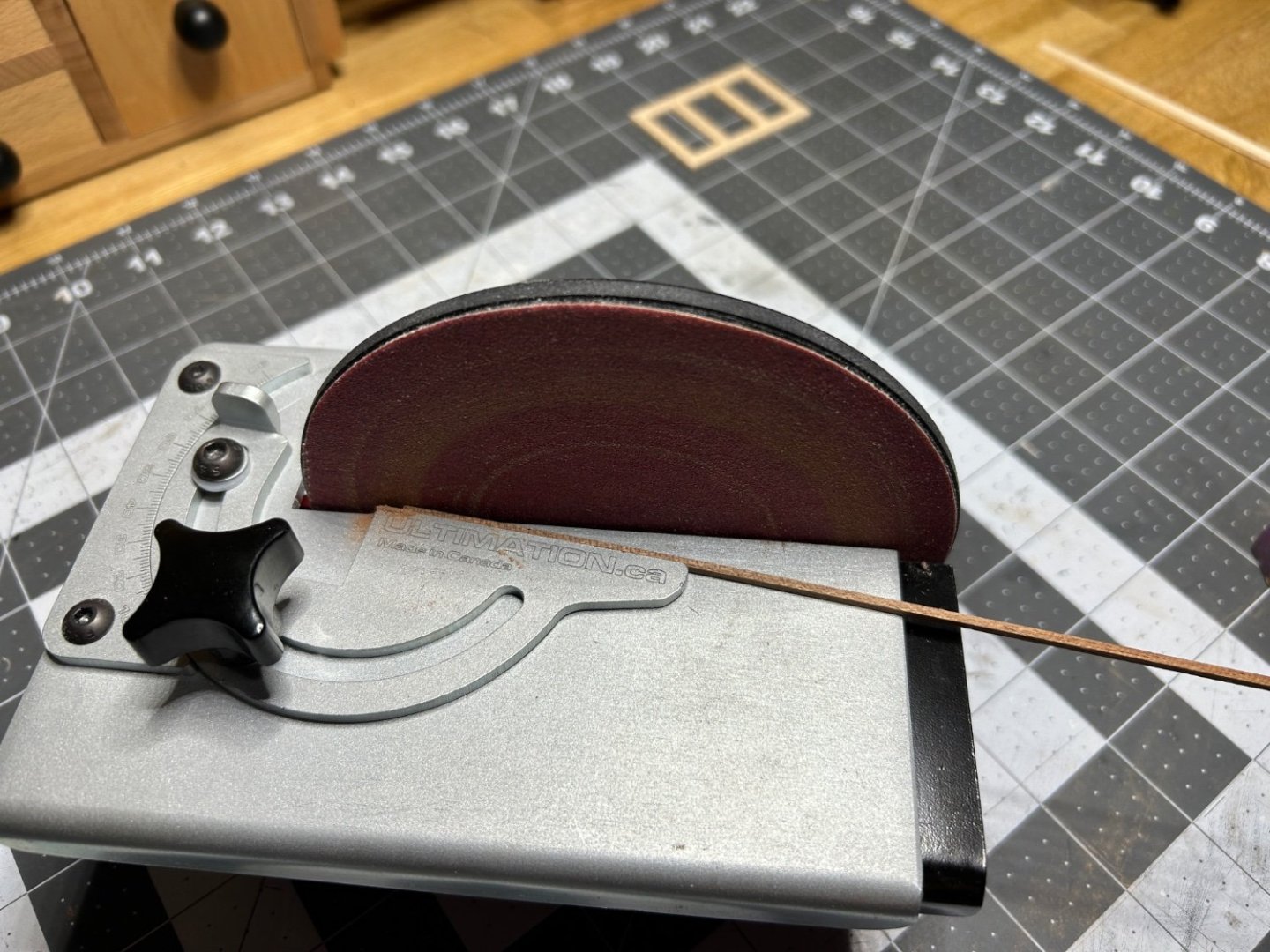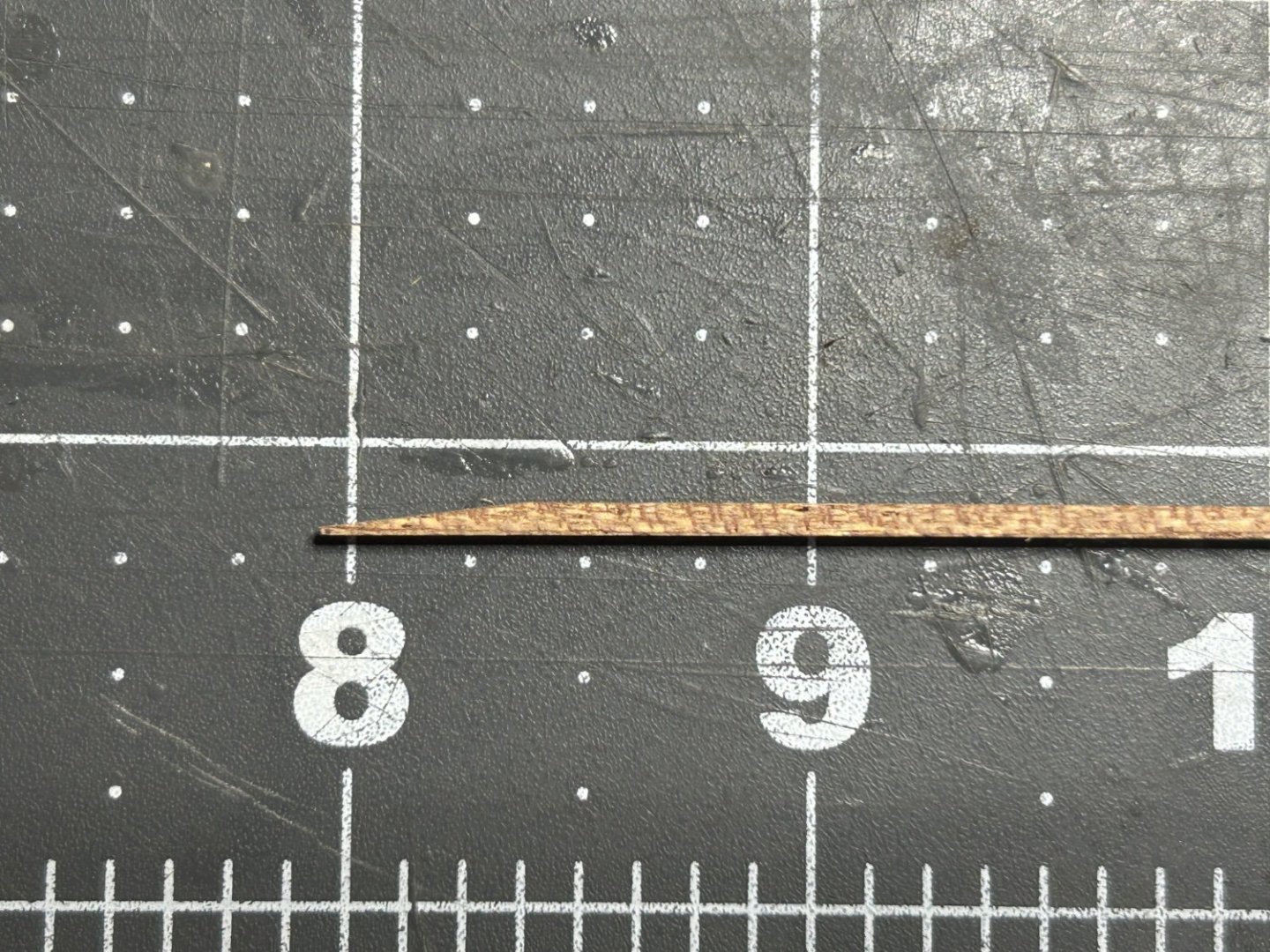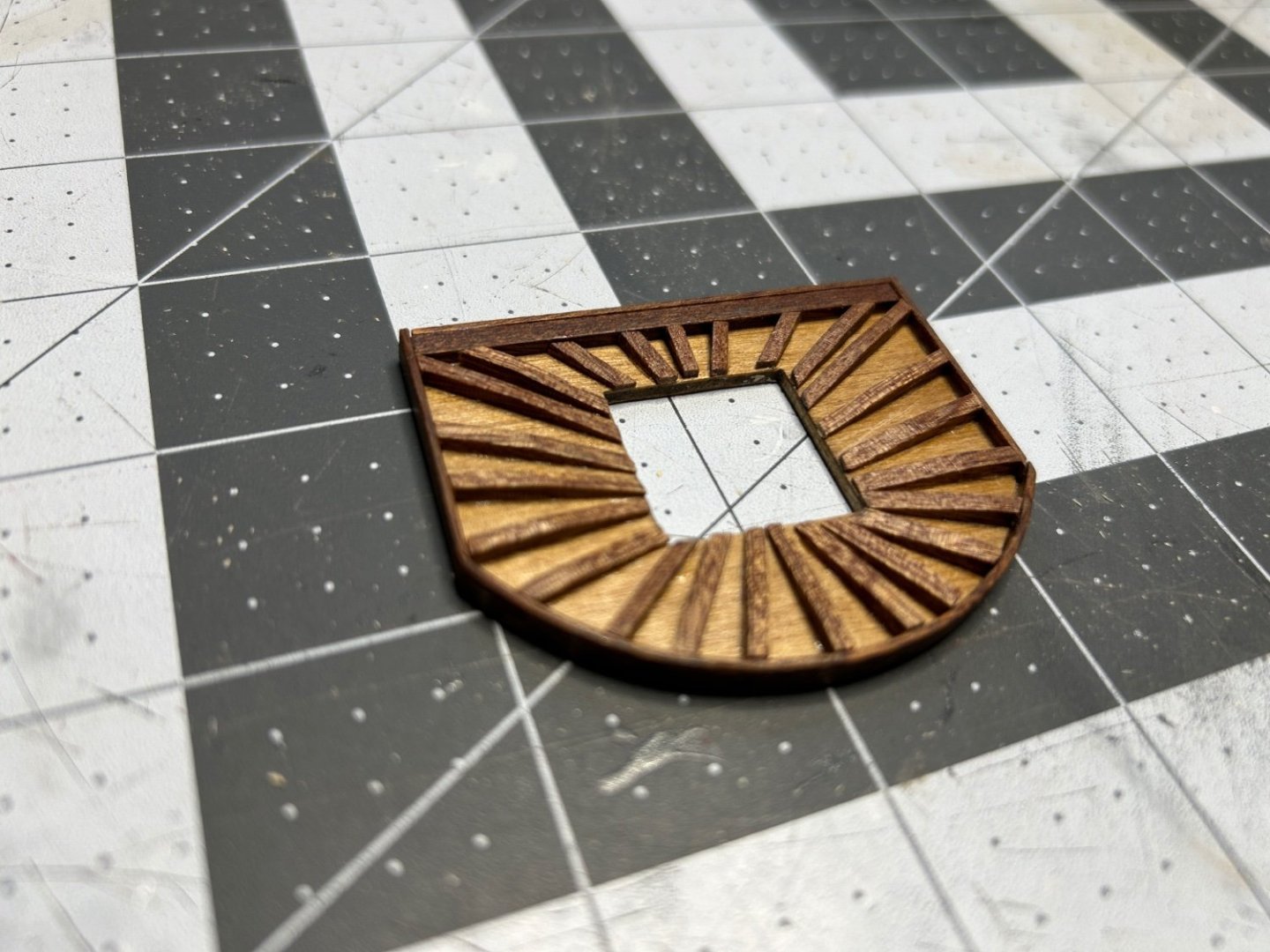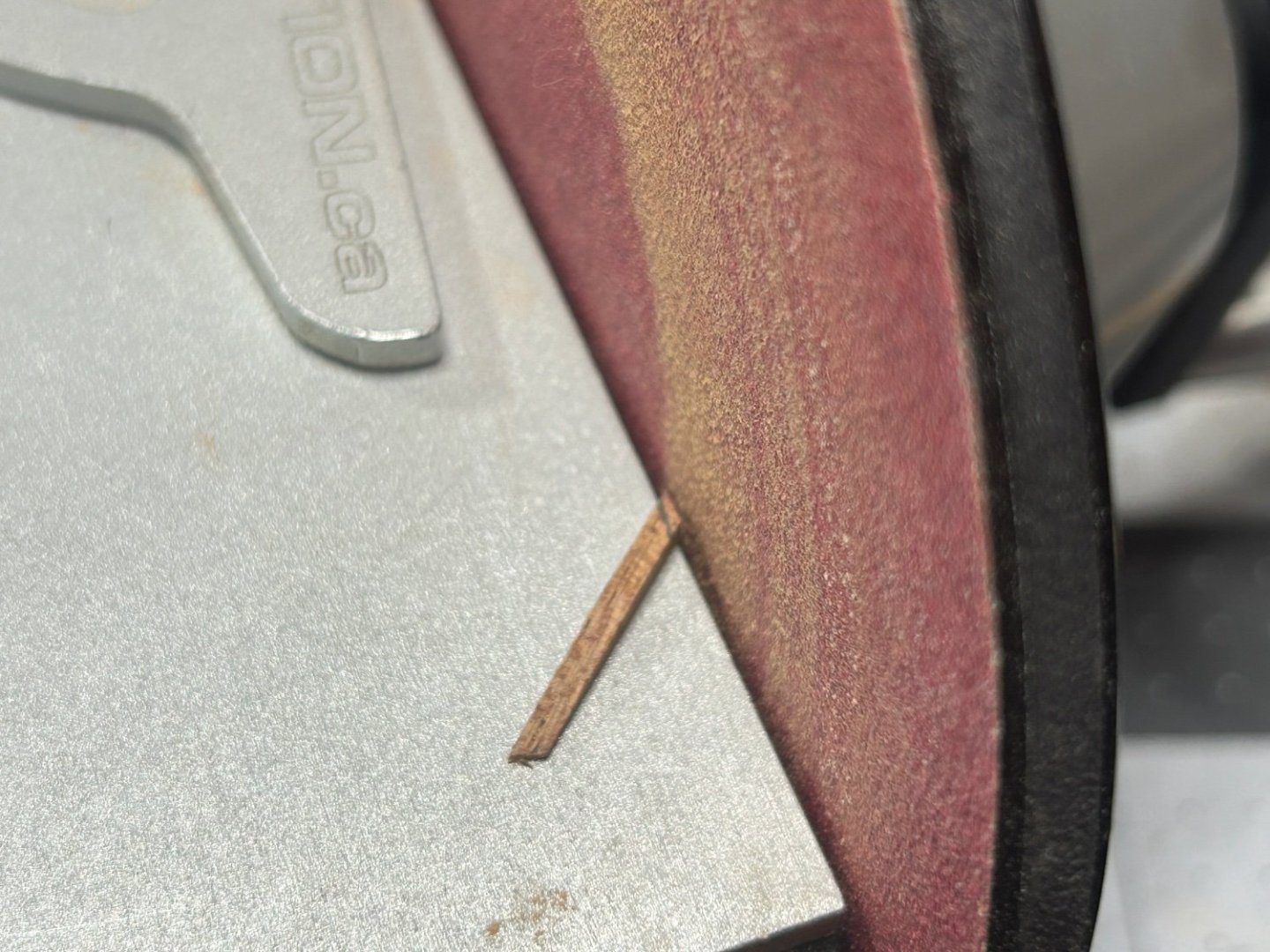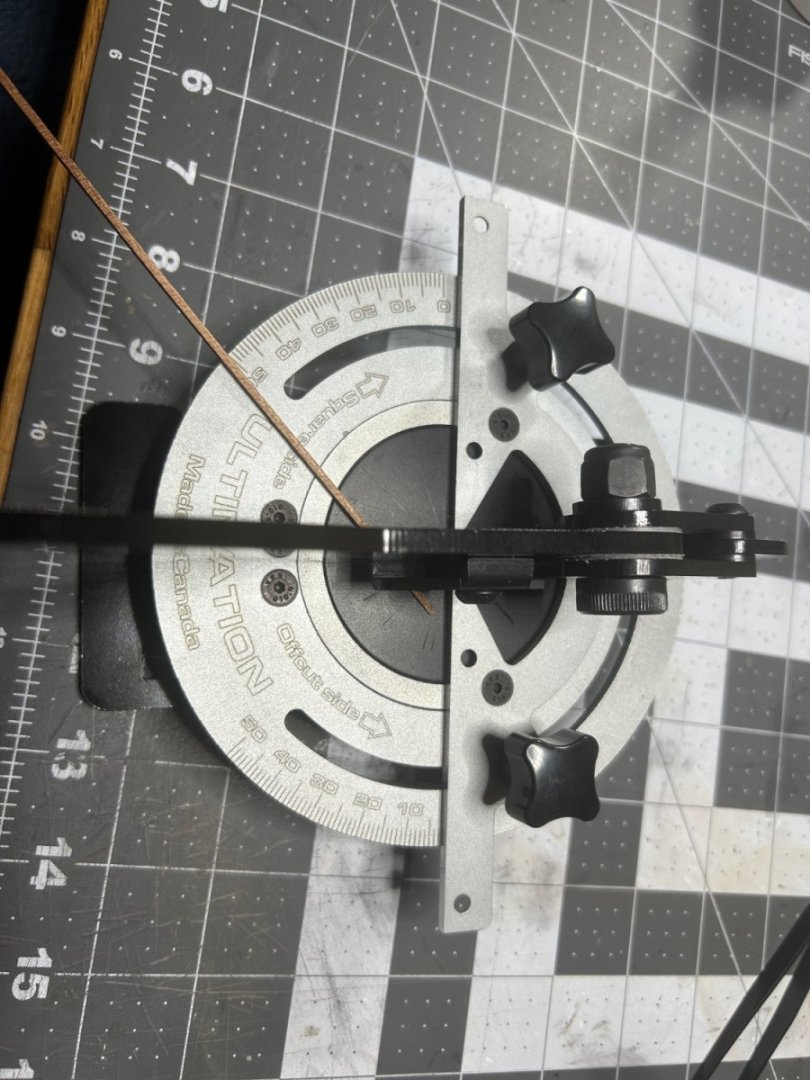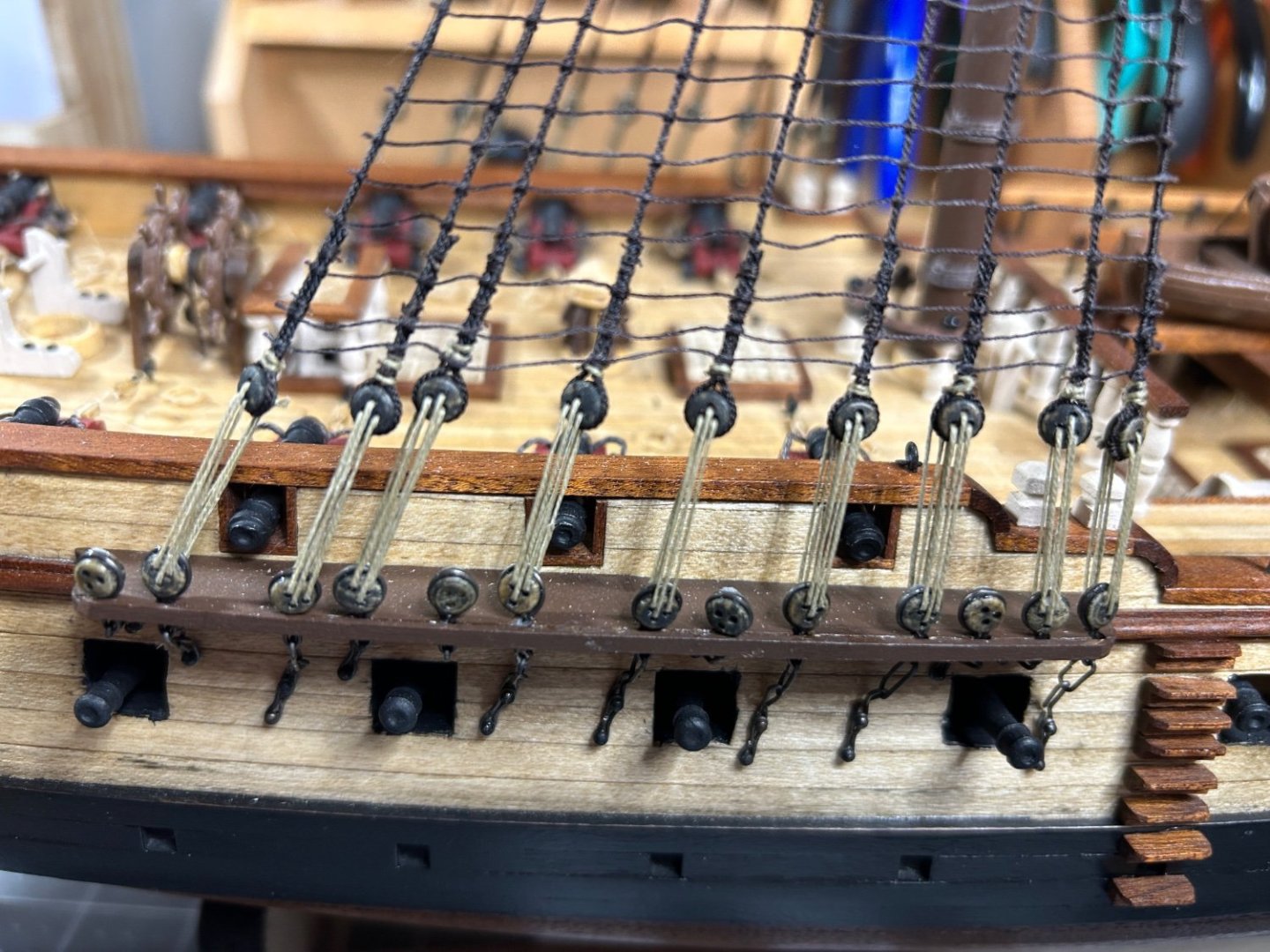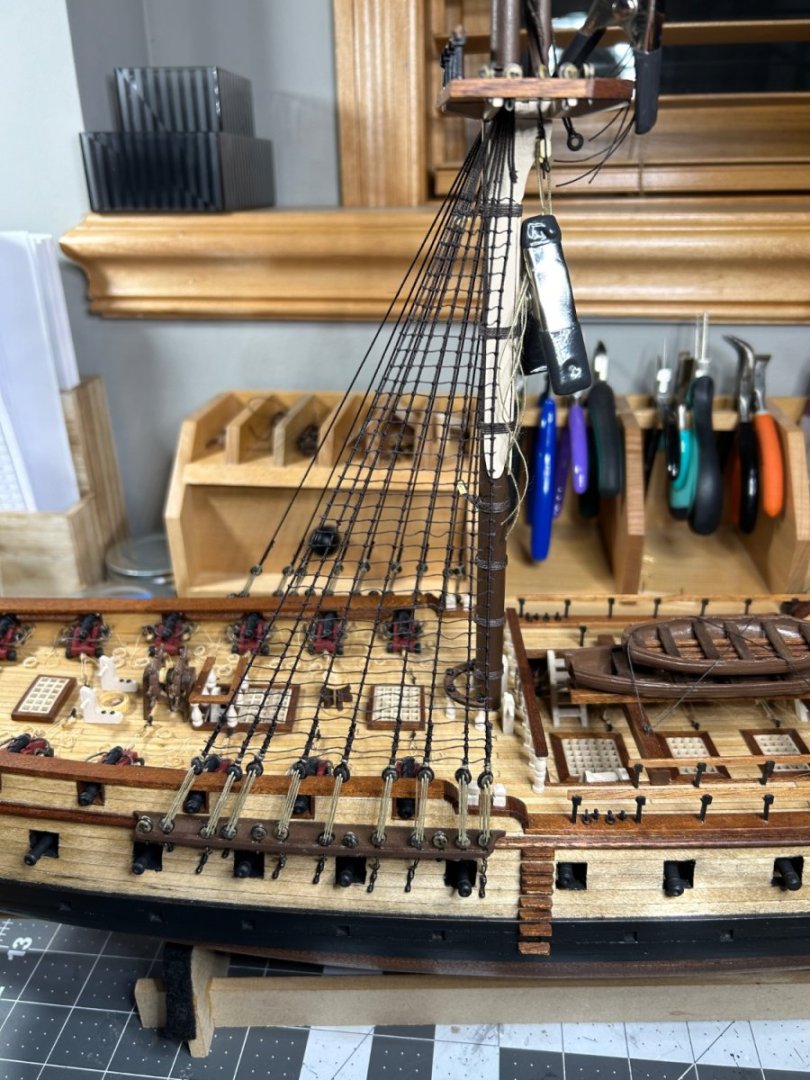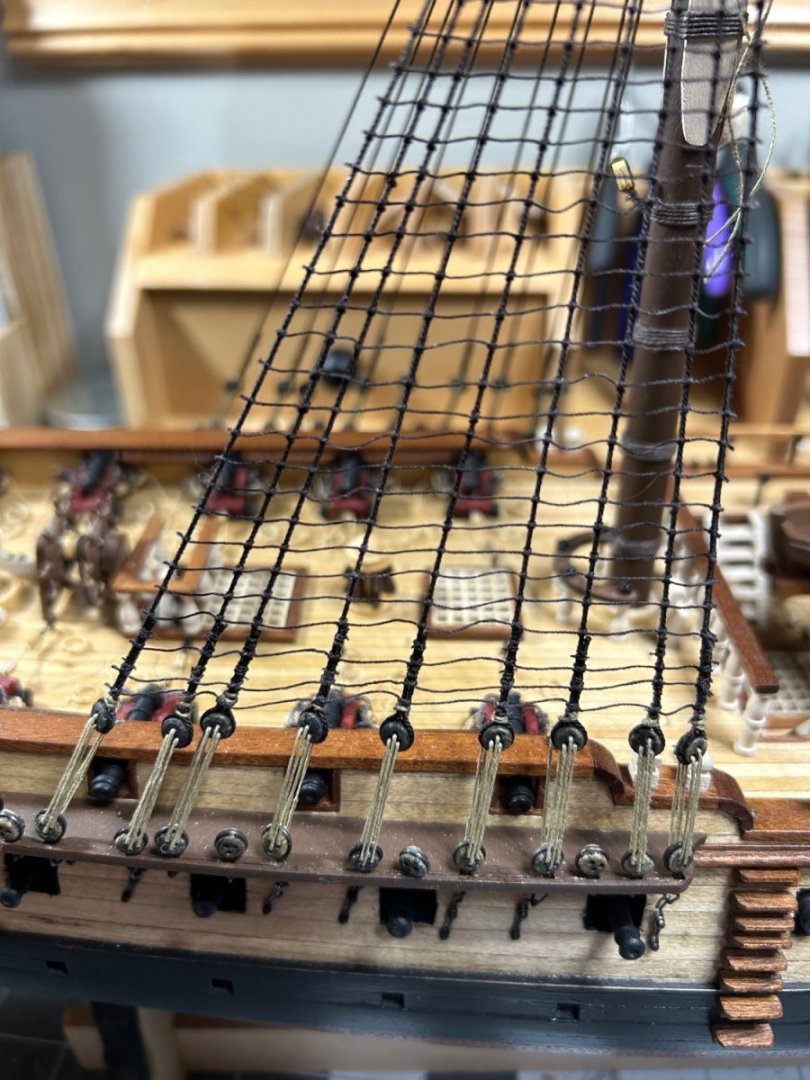-
Posts
507 -
Joined
-
Last visited
Content Type
Profiles
Forums
Gallery
Events
Everything posted by RossR
-
It has been a month since my last post. Work has kept me busy so progress has been a little slow. I finally finished all of the shrouds and ratlines on the main mast. The main shrouds are .030 inch diameter ropes and the rest of the shrouds are .018 inch diameter ropes. The ratlines are .008 inch diameter rope. All of the dark ropes are from Syren. For the lanyards I used the natural lines provided by Occre. I find the futtock stave at the top of the top mast shrouds to be particularly challenging to work with. The space between the shrouds is so small that I really struggle manipulating the lines to lash the stave to the shroud and then to lash to futtock shrouds to the top mast shrouds after they wrap around the stave is equally difficult. The close up photography is not very forgiving, but from 12 - 24 inches away with the naked eye I am pretty happy with the results. Next up will be the mizzen mast, then on to the backstays and stays.
-
I did the same thing on my Beagle. Definitely a weak spot were the bulwark narrows. Should be fixable, but if you want to wait a few weeks, Occre is happy to send a replacement part. They are mailed from Spain, so depending were you live it can take a few weeks. You can order the part on their website, but I would suggest fixing and not waiting.
- 47 replies
-
You are right about that. I have a collection of small pieces of various diameters of PVC pipe that’s I use as forms for bending various wood parts.
- 90 replies
-
Great idea on using the Dremel saw blade. I will definitely copy that some day.
- 90 replies
-
Last week I purchased the Ultimation Slicer and Sander with the Repeater attachment. I got a little carried away and posted a mini review on the “What Did You Receive Today” forum. I thought I would post a more complete review of the tools here. These items can be purchased individually, but I purchased them as a package deal. The Slicer is a well built tool. The base is built from 1/8 inch thick steel. The base has a black powder coated finish that should wear well over time. It is designed in a way that it can be easily clamped to a workbench and is equipped with holes to allow it to be permanently mounted to a work bench. The foot print of the Slicer is about 7 inches wide 12 inches deep without the extension for the stop installed. It weighs about 2.5 pounds. If the extension for the stop is installed, it adds about 7 inches to the width. The extension for the stop can be installed on the right or left side of the Slicer. The cutting blade is a single bevel blade that is used for carpet trimming. Ultimation provided 10 replacement blades with the slicer and they sell replacements at a very reasonable price, but shipping can be expensive. I really appreciate that they also provide the manufacturer and part number of the blade so you can source them yourself if you choose. There is also a small round cutting mat that appears to be cut from a self healing cutting mat. These can be flipped over if one side has excessive wear and two are provided. They sell replacement mats if you need them. The angle of the fence can be adjusted by loosening two knobs and then manually twisting the fence. The base has the angles marked off in 1 degree increments. The extension with the stop can be added fairly easily. You need to remove the fence from the base by removing the bolts that the two knobs are threaded on to. The stop can then be attached to the fence with two screws through the bottom of the fence. The screws are short and the hardest part is getting them started. When the fence is removed the cutter handle is lifted all the way back exposing the blade. The instructions say to put a piece of tape over the cutting edge while this is being done for safety. You definitely want to do this. These blades are very sharp. Sharper than a standard utility knife blade. When you make a cut with the Slicer you want to initially make a cut that leaves the piece slightly longer than your final length, then your Final Cut should just shave off 1 mm or so and you will get a great result. I believe you will get a better result if you position your part so your waste is on the side of the blade with the bevel. Keep that in mind when installing the stop. The cuts I am showing are in 2mm x 5mm Lime Wood that was left over from a previous build. In the short time I have used the slicer, I have not felt the need to clamp it to my work bench. I think the weight of the slicer helps keep it in place while using it. I have seen YouTube videos of people using it on wood that appears to be about 1/4 inch thick. I have not tried cutting anything that thick yet. Before I purchased the Slicer, I reached out to Ultimation about whether it could be used on thin copper for plating a hull and they sent me a link to Olha Batchvarov’s YouTube channel were you can find a video of her using it for exactly that. I am very happy with the Slicer and am looking forward to years of use from this tool. The Sander is also very well built. The base is made out of the same 1/8 inch steel. In the Sander’s case it has a red powder coat finish. The base is designed to be easily be clamped to a work bench or permanently mounted. The Sander’s foot print is about 7 inches wide and 6 inches deep. The repeater will add up to 8 inches to the depth when installed. My small kitchen scale only goes to 5 pounds and the Sander exceeded that, so I don’t know the exact weight, but it is more than 5 pounds. The spindle that the holds the sanding disk turns very smooth. The sealed bearings appear to be a very high quality. I do not own a runout gauge, but there appears to be no visible runout on the disk. There is no unwanted play in the spindle at all. The Sander is shipped without the handle installed to save space, but it is ready to go from the box other than that. The top table is made of aluminum along with the guide. The markings on the guide are in one degree increments. There are no positive stops on the sander, but given the compact size that may have been difficult to successfully engineer into the product. In my use so far I haven’t had any trouble getting the guide set to the desired angle. There is a small ledge at the opposite end of the disk from the guide that can be used as a fixed 90 degree guide for small pieces. The table is mounted to a hinged plate that can be opened reveals an adjusting knob. This allows the top table to be slid left or right about 3/4 of an inch for the purpose of allowing more even wear on the sand paper. It also allows for easily cleaning out the sawdust created during use. There is also a small set screw on the back that allows the distance between the disk and the table to be adjusted. I have not played with this feature, so I don’t know how easy it is to adjust. The guide is adjusted by simply loosening the knob on top. Ultimation recommends 120 grit automotive grade adhesive disks, and the unit ships with one already installed. They prefer the automotive grade because they say the adhesive works better and doesn’t leave residue when they are removed. Because the sanding disks are readily available, Ultimation does not resell them. They provide two manufacturers and part numbers that they say work well, so you can source them yourself. They say the disks should have a long life due to the fact that heat is one of the enemies of sandpaper and due to the low RPM’s of the hand operated disk very little heat is generated. The repeater is a device that utilizes a spring loaded pusher that can allow the Sander to consistently reproduce parts to the same length. To install the Repeater, you need to remove the locking nut under the table, then the adjusting knob and the retaining screw from the guide, then the Repeater fits into the same spot as the guide. The sander will leave a burr on the bottom of the material being sanded. I have watched YouTube videos of others using the Sander and if you briefly reverse the direction of the disk this burr is mostly removed. I found It easier the use a sharp hobby knife to remove the material. The amount of material left seems less with harder woods. Here is a small example of three pieces made with the repeater. They came out uniform in size and with consistent angles. On my current build I have started the rigging, so not a lot of work left that requires these tools. I did have the mizzen top left to build and I used Ultimation tools for the braces on the top surface of the top. I apologize, if braces is not the correct term for these features. I used the Sander to add the bevel to a 2mm x 2mm piece of Sapelli. I set the guide to 7 degrees. The end of the piece eventually was thin enough to fit between the disk and the table so I went very slowly. I then used the Slicer and Sander to get the angles right at each end of the piece. I freehand this step after marking the ends from the plans. These tools, especially the sander made this task far easier than the tools I used for the first two tops on my model. I am thrilled with the results. These tools are expensive. I purchased a bundle to get a better price on the three items. They can be purchased separately if you choose to. I know a lot of modelers won’t have the money to invest in these tools, and another member said the shipping to Europe is cost prohibitive. If you can afford it I would definitely suggest considering a purchase of these tools. Right now if I had to choose one of them, I would choose the Sander. Especially with the repeater, I find this tool more versatile. I can’t wait to use them more on future projects.
-
Your planking looks fantastic. Great work.
- 95 replies
-
- flirt
- vanguard models
-
(and 1 more)
Tagged with:
-
.thumb.jpeg.ffac2f8a24d212961a83eab4efb06a6c.jpeg)
HM Cutter Cheerful 1806 by Erik W - 1:48 scale
RossR replied to Erik W's topic in - Build logs for subjects built 1801 - 1850
Your work is fantastic. Look great. -
.thumb.jpeg.ffac2f8a24d212961a83eab4efb06a6c.jpeg)
Help with understanding the rigging diagram
RossR replied to Linda DOBLE's topic in Masting, rigging and sails
The books mentioned in some the previous posts can be great resources, but may not be applicable to your ship if I am correct and it is the Amerigo Vespucci, as it was built much later in the 1930s. -
.thumb.jpeg.ffac2f8a24d212961a83eab4efb06a6c.jpeg)
Help with understanding the rigging diagram
RossR replied to Linda DOBLE's topic in Masting, rigging and sails
I did a little research on the Occre web site and it looks like you are building their Amerigo Vespucci. I think this is probably Occre's most impressive model ship. I looked at the plans for the yards, and I believe there should be a small 1 mm hole near the end of the yard that the line passed through. This would represent the sheave that Roger mentioned and would be instead of the block shown on the diagram that Gregory provided. Both are correct, but I suspect the sheave in the yard became more common than the block on later ships. There is a great build log of this ship on this form by a user named Daniel that you may want to look at if you haven't already. You may be a little further along than him, but he may have some thoughts on the rigging for this ship. Good luck with your build. -
I assume that bending iron was used for your violin builds.
- 95 replies
-
- flirt
- vanguard models
-
(and 1 more)
Tagged with:
-
.thumb.jpeg.ffac2f8a24d212961a83eab4efb06a6c.jpeg)
Help with understanding the rigging diagram
RossR replied to Linda DOBLE's topic in Masting, rigging and sails
These look like Occre rigging plans. What ship are you building? Do the yards have a hole near the end that the line passes through? On the HMS Beagle that line, I believe it is called the sheet, is attached to the lower corner of the sail and passes through a hole near the end of the yard then the line is run through the block as you indicate with your highlighter. if you can let me know what ship you are building I will look at the rest of the plans from Occre ( assuming it is an Occre model) and confirm that is how Occre intends the rigging to be installed. -
Looking forward to seeing your craftmanship at work.
- 95 replies
-
- flirt
- vanguard models
-
(and 1 more)
Tagged with:
-
No. I think it is a single layer of 1mm x 3mm or 1mm x 2mm lime wood.
- 31 replies
-
Last month I posted that work was going to get in the way for awhile, and as expected progress on the ship has been slow. I did manage to get the main shrouds attached. I managed to do a better job lining up the deadeyes on the main shrouds than I did on the fore mast shrouds. I have the ratlines added to the starboard side. I figure I am about halfway through the ratlines. I have tied 1029 clove hitches so far. I purchased this model when I was almost finished with my HMS Beagle. I thought if I enjoyed rigging the Beagle get something even bigger with more rigging. After all those clove hitches I understand why so many people build cutters instead of frigates. Thanks for all the views. On to the port side.
-
I think definitely consider blacken the chain plate, the eye bolts, the pintles and gudgeons and the chains. There are some builds on MSW that made wood doors and window frames instead of using the brass ones provided and they looked great. I discovered MSW as I was finishing my Beagle and when I look at it now my only regret is all the brass. I wish I had blackened it.
- 90 replies
-
The material provided for the second layer of planking is an extremely thin veneer. Most kits provide 1/16 inch thick material for the second planking. The method suggested above may not work as intended with the thin veneer. I would watch the videos and give it a try, but also watch the videos from Occre and then decide which method will work best. Does anyone know of a build log for a two layer planked Occre kit that successfully used the egde bending techniques in Chuck’s video? The technique demonstrated in Chuck’s videos will produce a more authentic model, and that is certainly something to strive for, but I think the materials you are working with on this model may not be right for that technique.
- 90 replies
-
It is easy for me to offer an opinion since I haven’t started mine, but I do think it make sense to start the beveling of the forward bulkheads before they are attached. It will be impossible to file or sand with a forward motion after they are attached because you run into the building board.
- 82 replies
-
- half hull planking project
- half hull
-
(and 2 more)
Tagged with:
-
Regarding the notches in the fore keelson, I think the notch needs to allow for a smooth transition from bulkhead into the rabbet for the planking. You will need to adjust that notch accordingly based on how the bulkhead fits.
- 82 replies
-
- half hull planking project
- half hull
-
(and 2 more)
Tagged with:
-
If you are making your chain plate from wire, there is a good description of how to do this in the instructions for the Brig Syren from Model Shipways. The instructions can be downloaded from the Model Expo website.
-
I agree. I remember having a lot left. Any that you use going forward you will probably drill a hole and glue the nail in place. You won’t use them for the deck at all. Just glue for the deck.
- 31 replies
-
With your hull complete, what requires nails? Don't be intimidated. based on your progress so far, I think you will be happy with your results. I also build this kit as my first model and loved every minute of the build. I found the ships boats to be the hardest part, but based on your planking you should do fine.
- 31 replies
-
Have you found the youtube videos that Occre produced for this kit?
- 31 replies
About us
Modelshipworld - Advancing Ship Modeling through Research
SSL Secured
Your security is important for us so this Website is SSL-Secured
NRG Mailing Address
Nautical Research Guild
237 South Lincoln Street
Westmont IL, 60559-1917
Model Ship World ® and the MSW logo are Registered Trademarks, and belong to the Nautical Research Guild (United States Patent and Trademark Office: No. 6,929,264 & No. 6,929,274, registered Dec. 20, 2022)
Helpful Links
About the NRG
If you enjoy building ship models that are historically accurate as well as beautiful, then The Nautical Research Guild (NRG) is just right for you.
The Guild is a non-profit educational organization whose mission is to “Advance Ship Modeling Through Research”. We provide support to our members in their efforts to raise the quality of their model ships.
The Nautical Research Guild has published our world-renowned quarterly magazine, The Nautical Research Journal, since 1955. The pages of the Journal are full of articles by accomplished ship modelers who show you how they create those exquisite details on their models, and by maritime historians who show you the correct details to build. The Journal is available in both print and digital editions. Go to the NRG web site (www.thenrg.org) to download a complimentary digital copy of the Journal. The NRG also publishes plan sets, books and compilations of back issues of the Journal and the former Ships in Scale and Model Ship Builder magazines.

